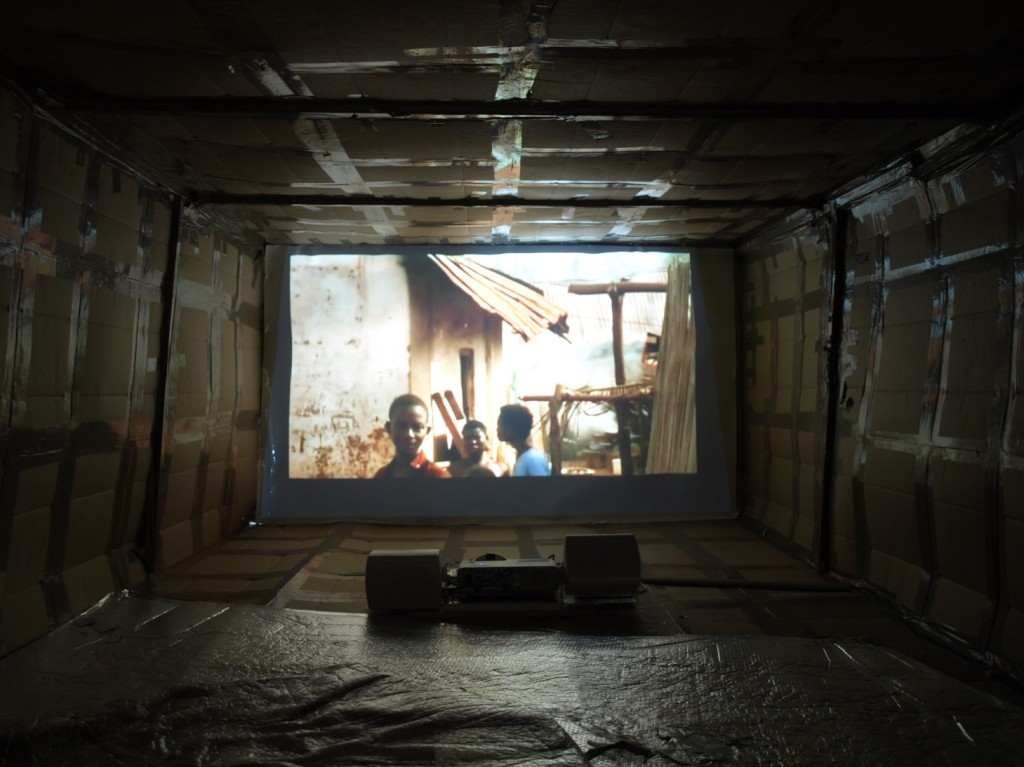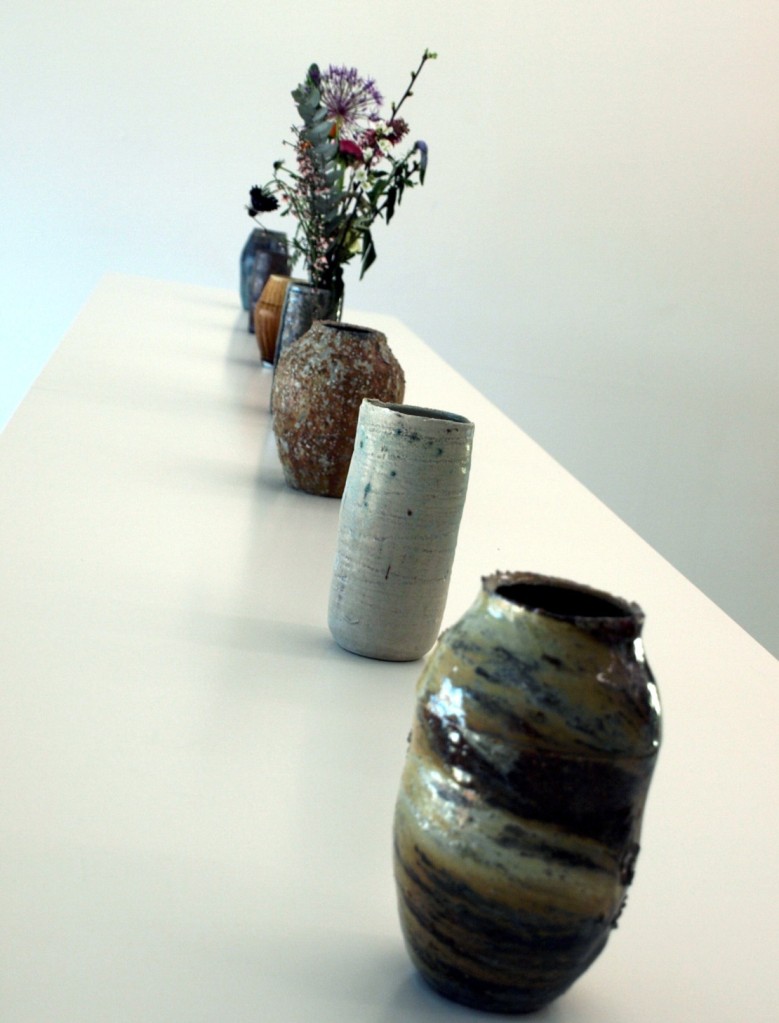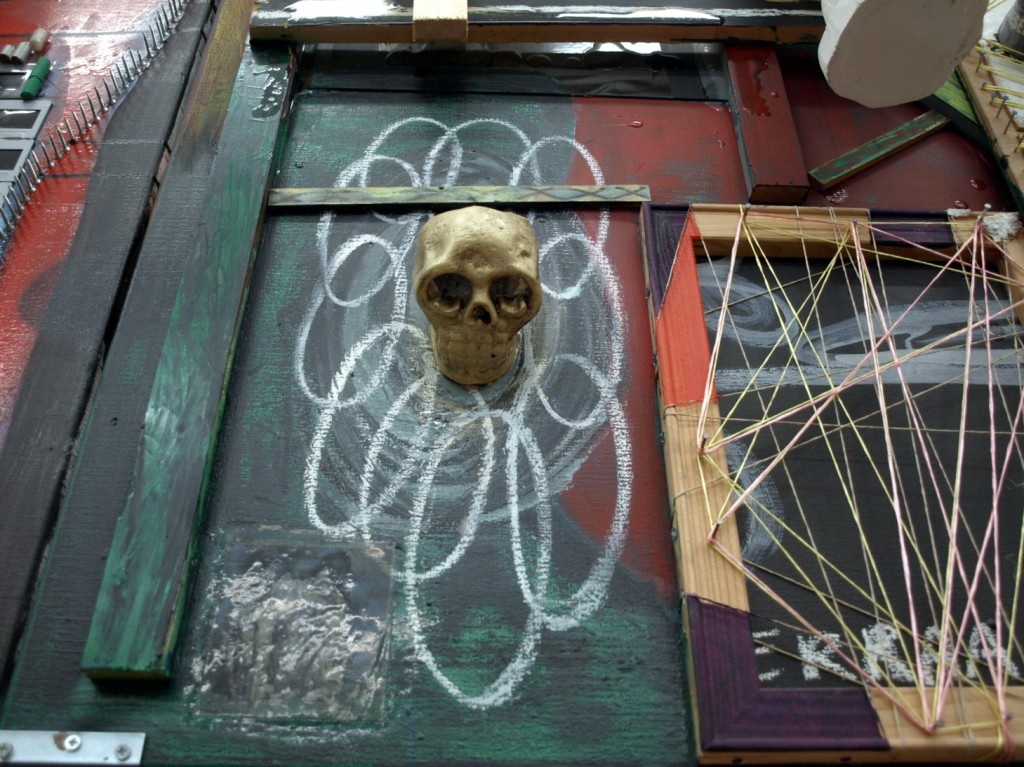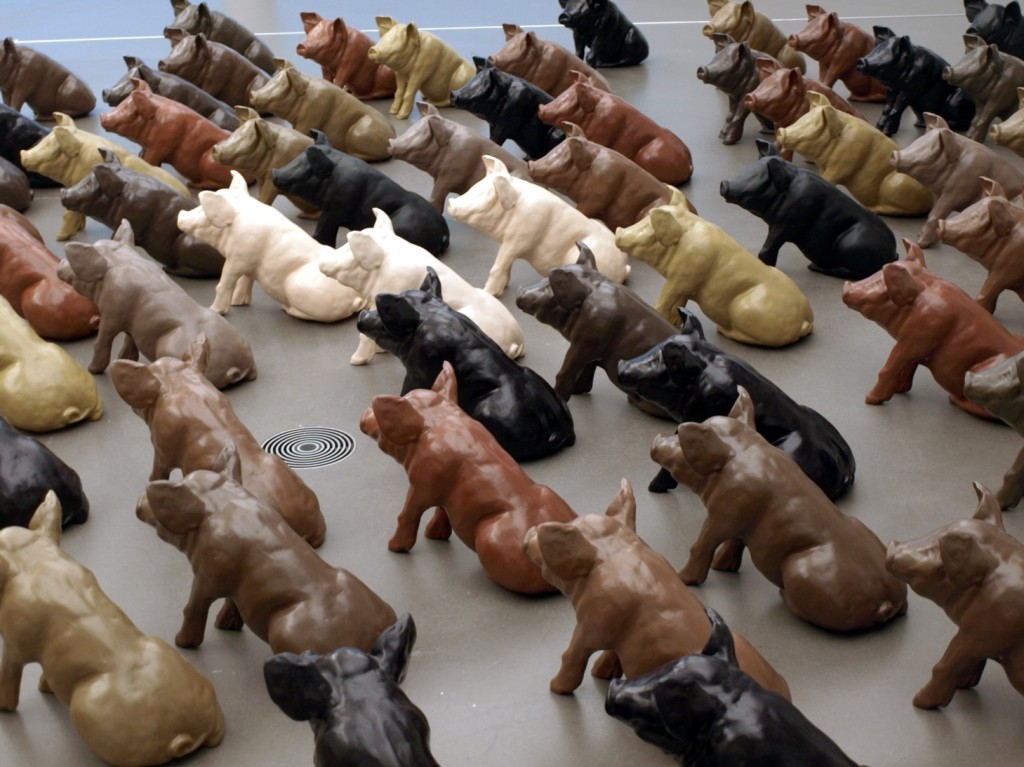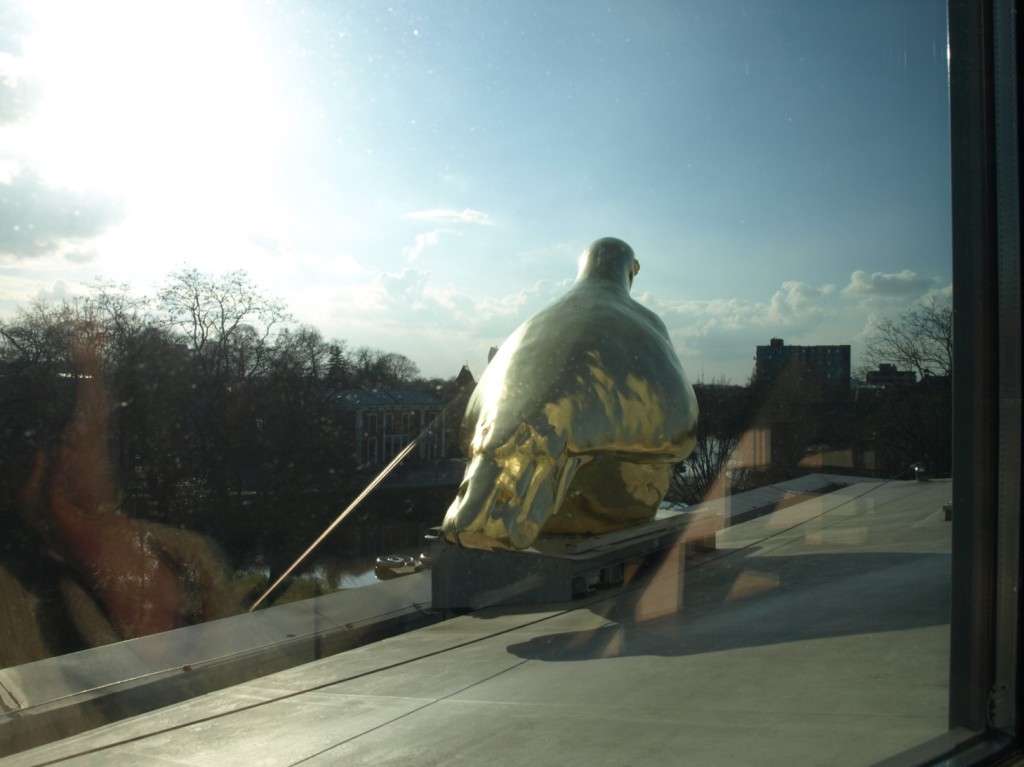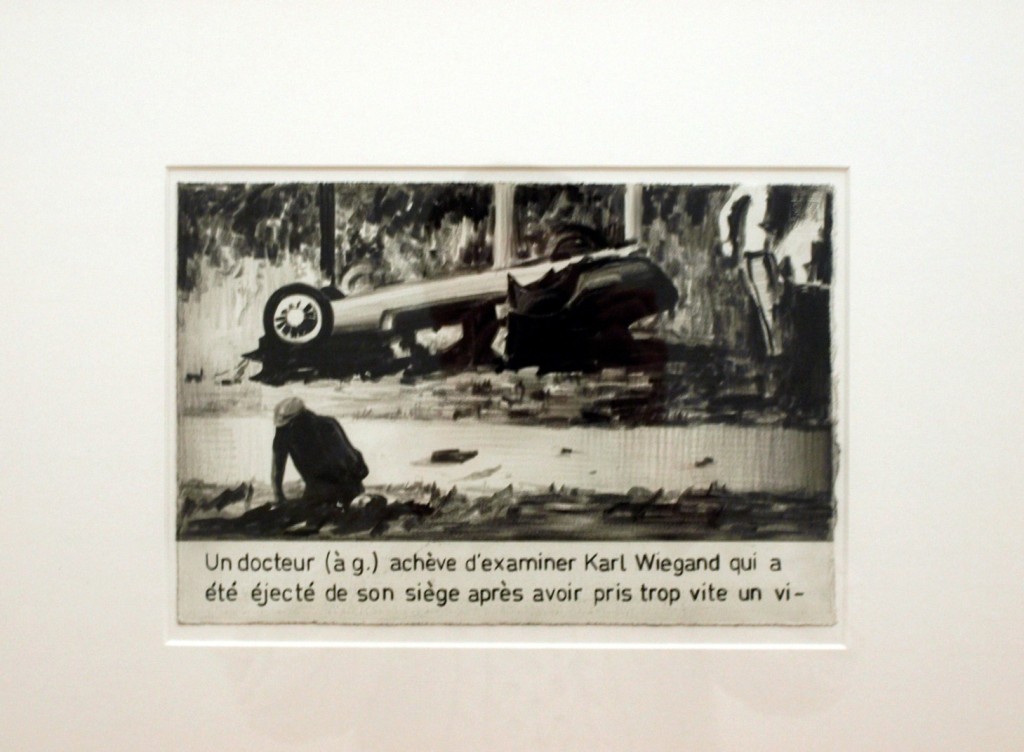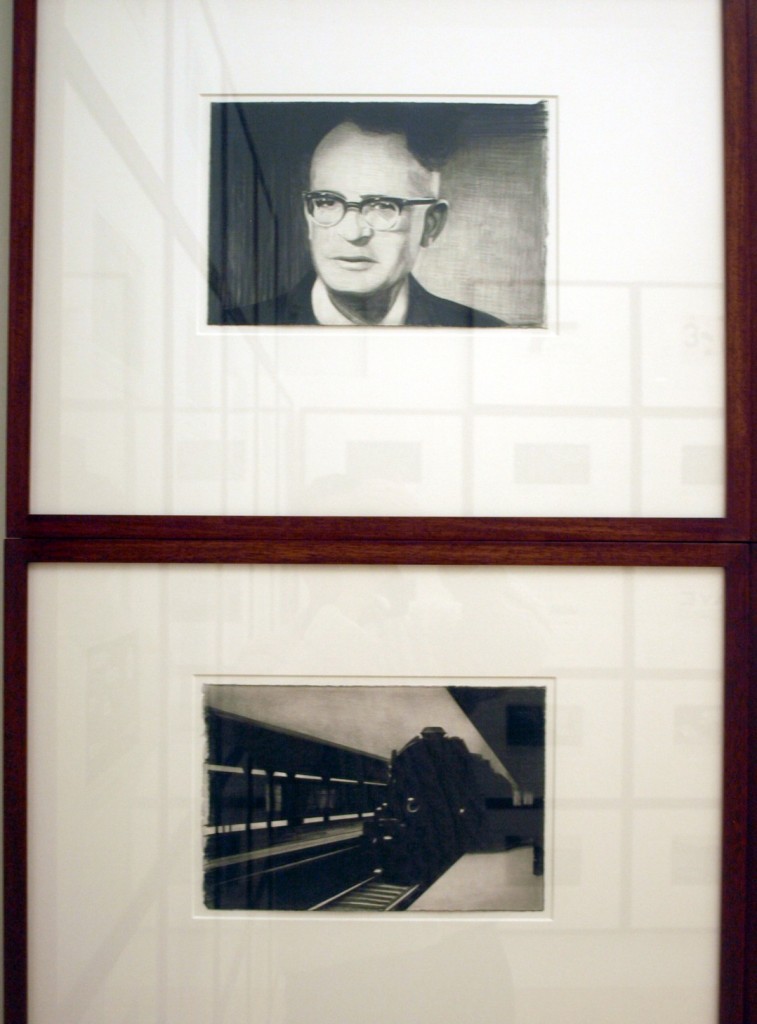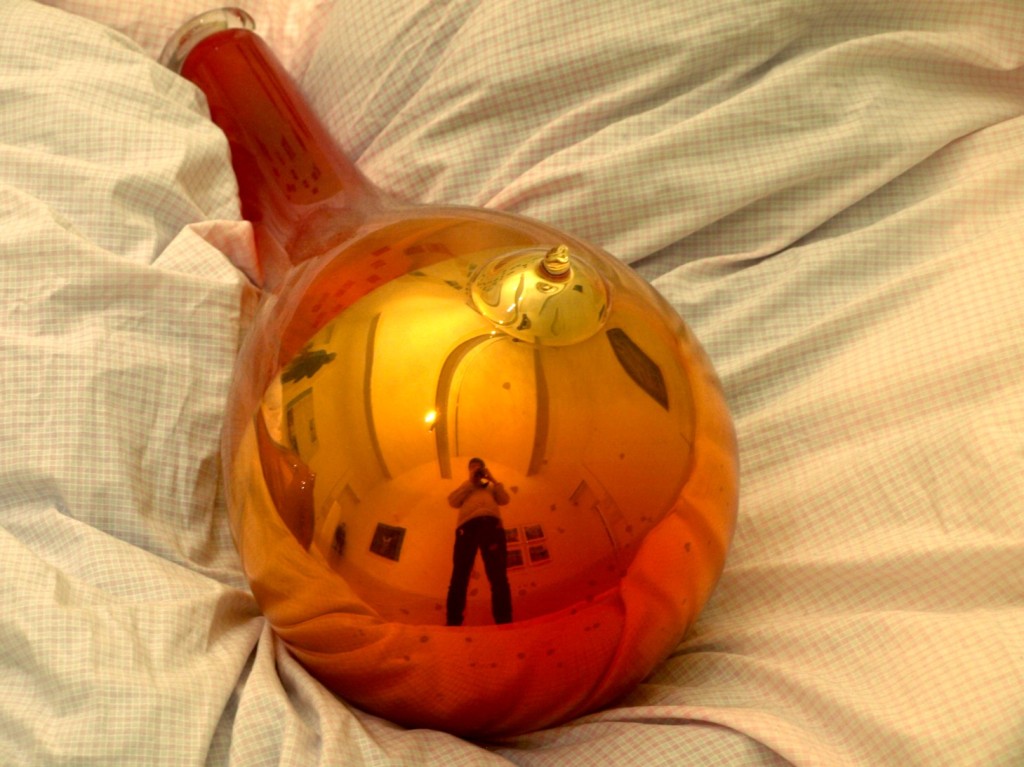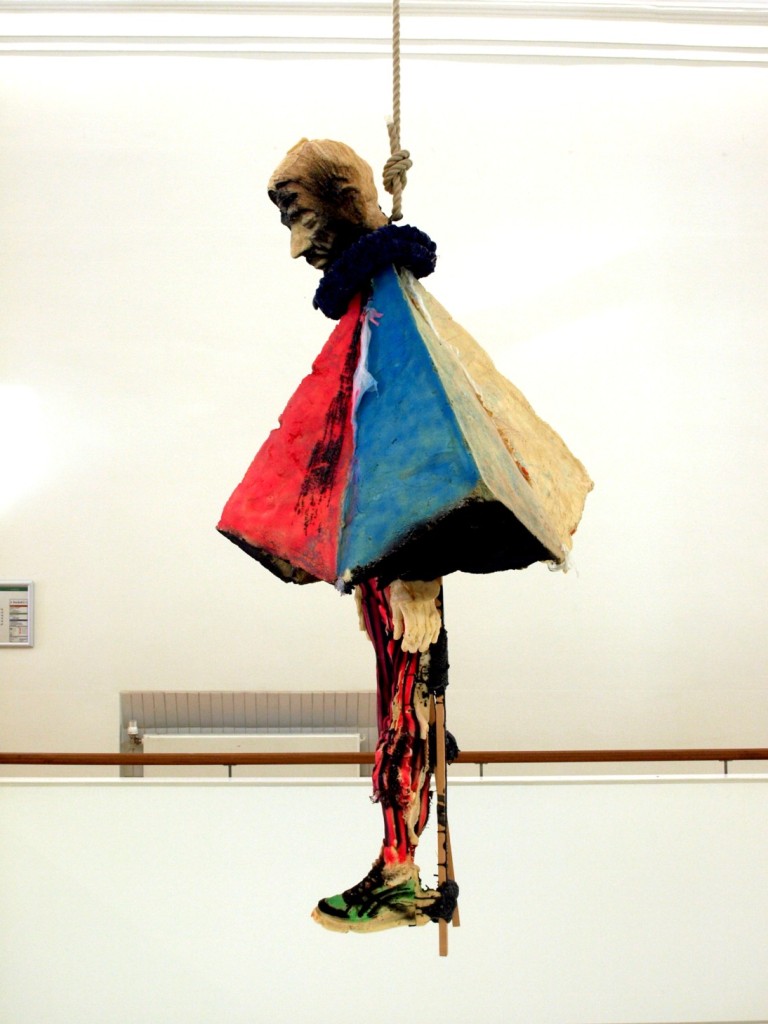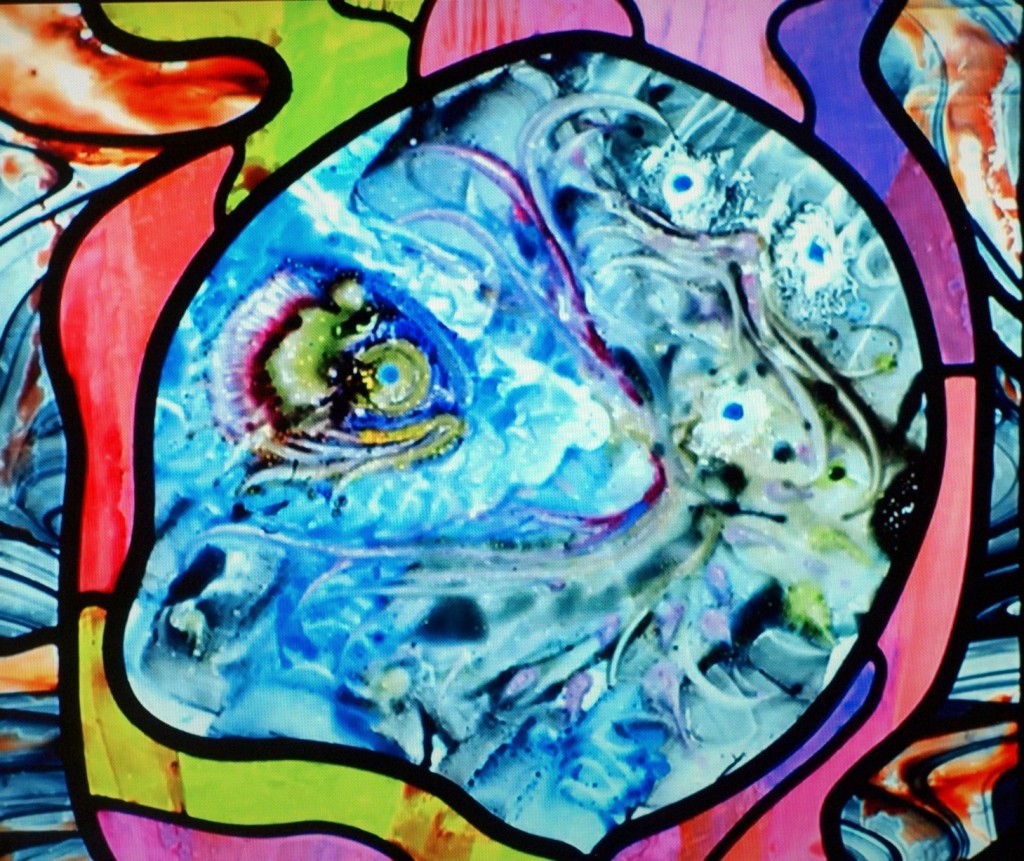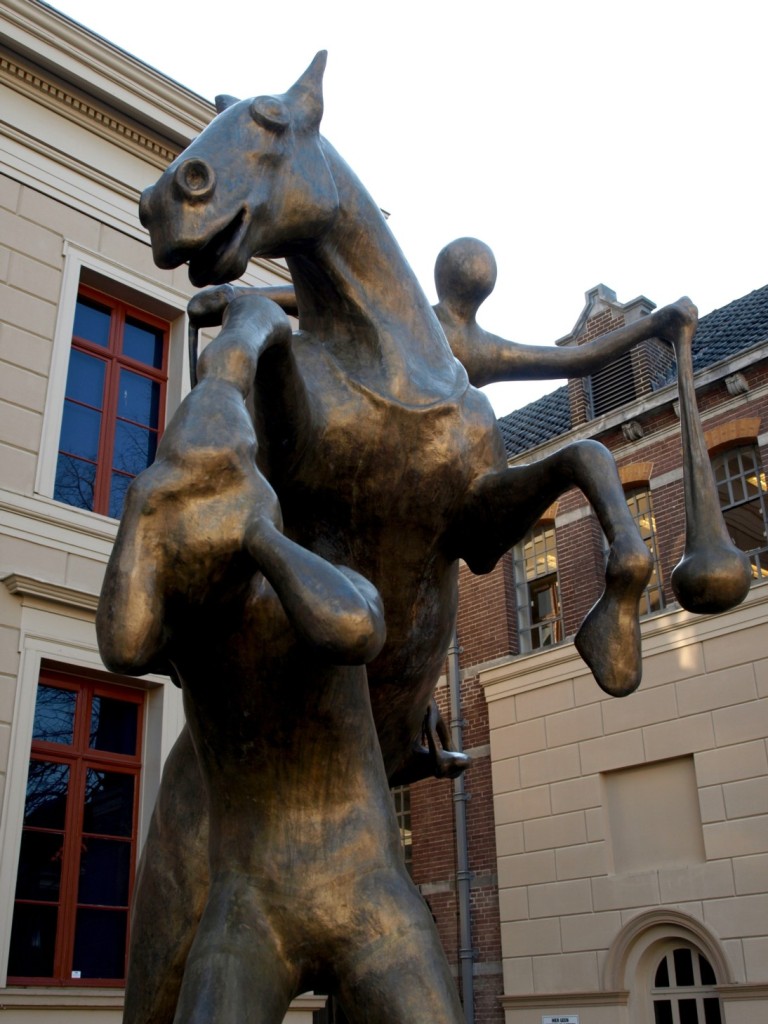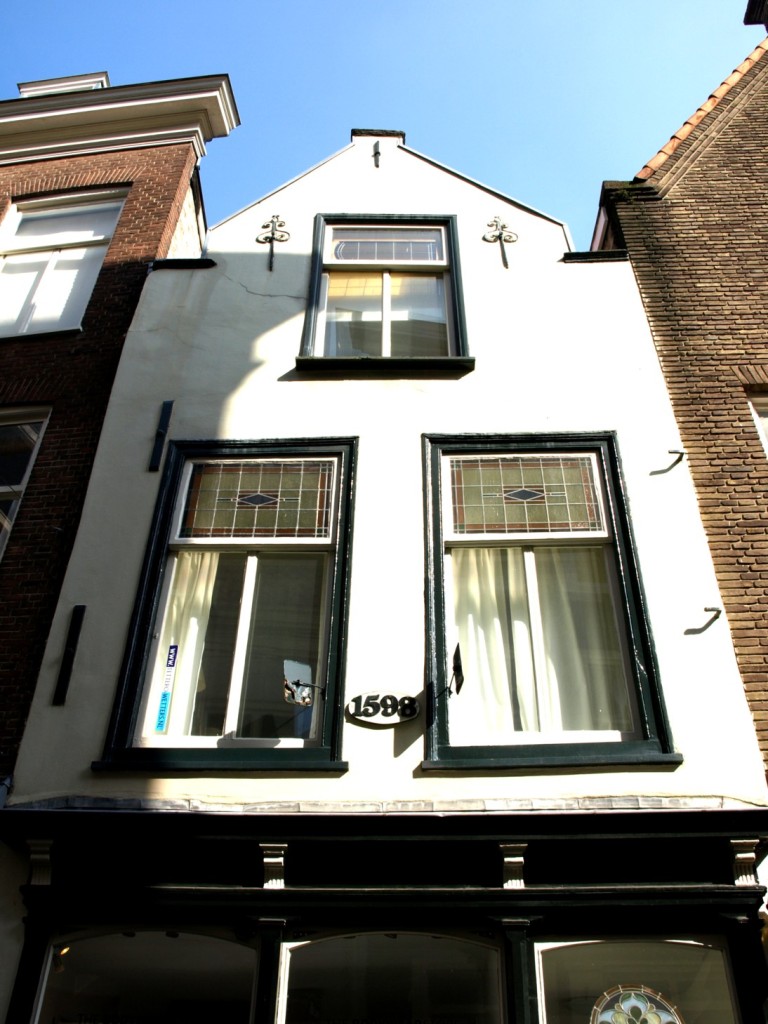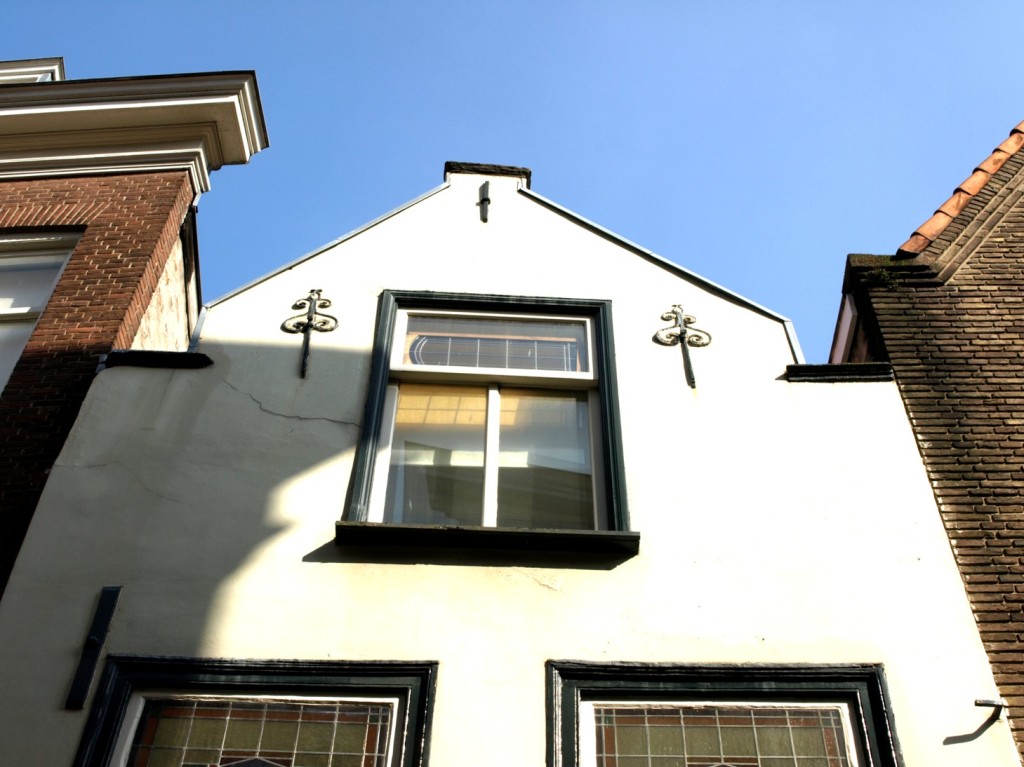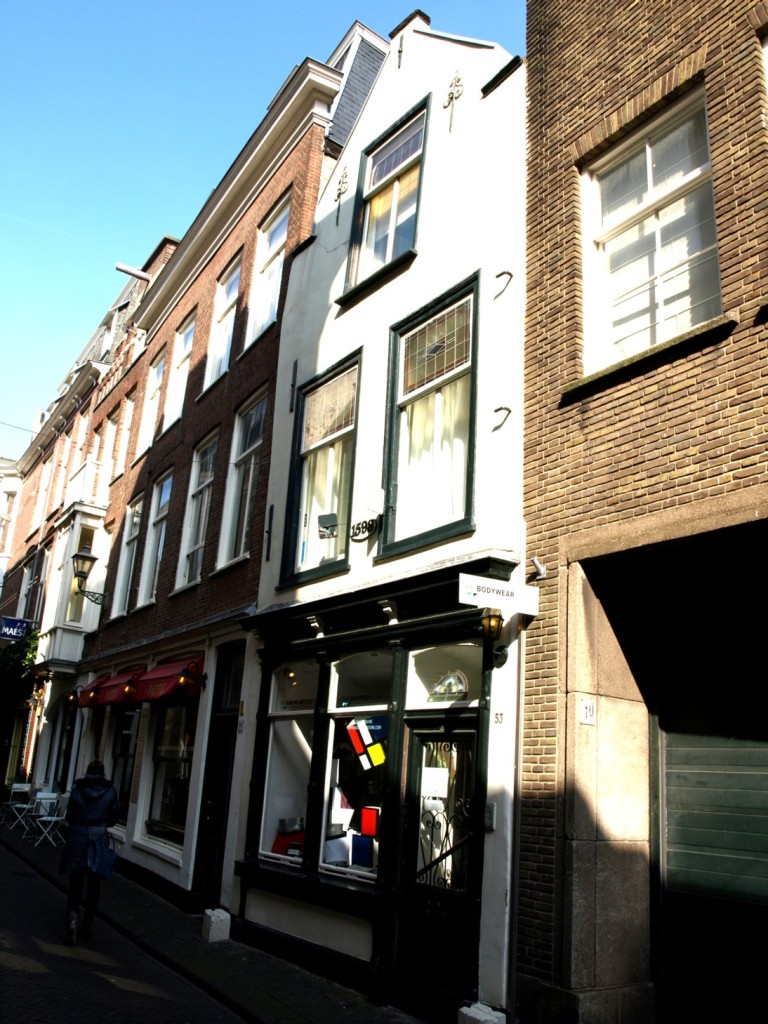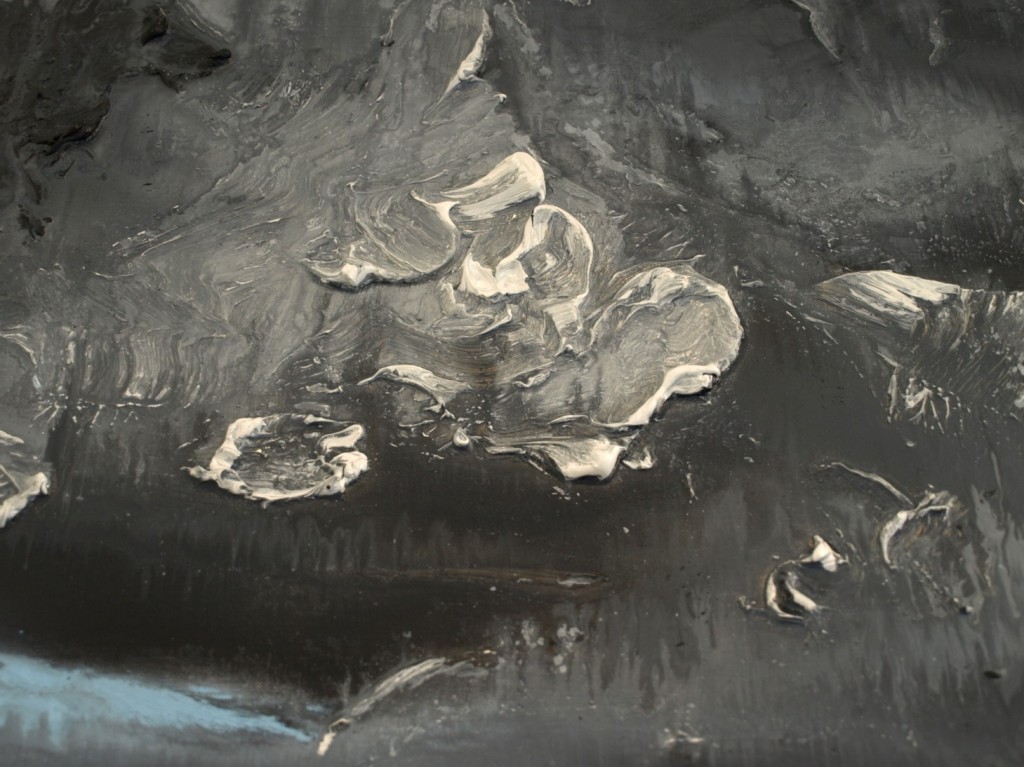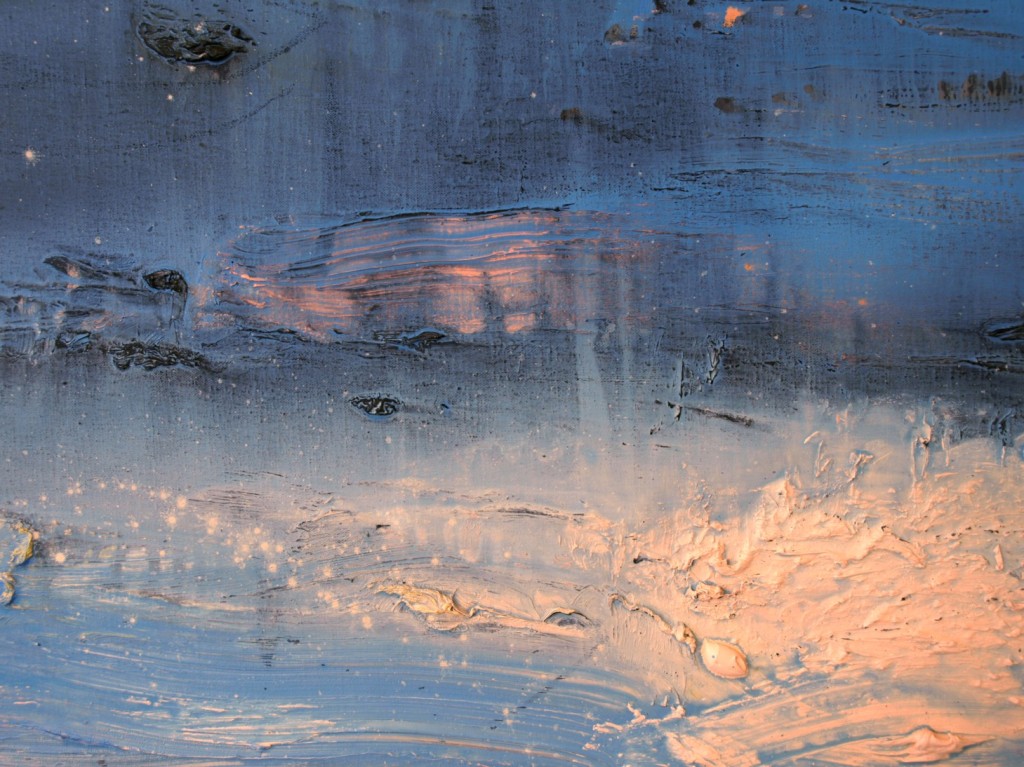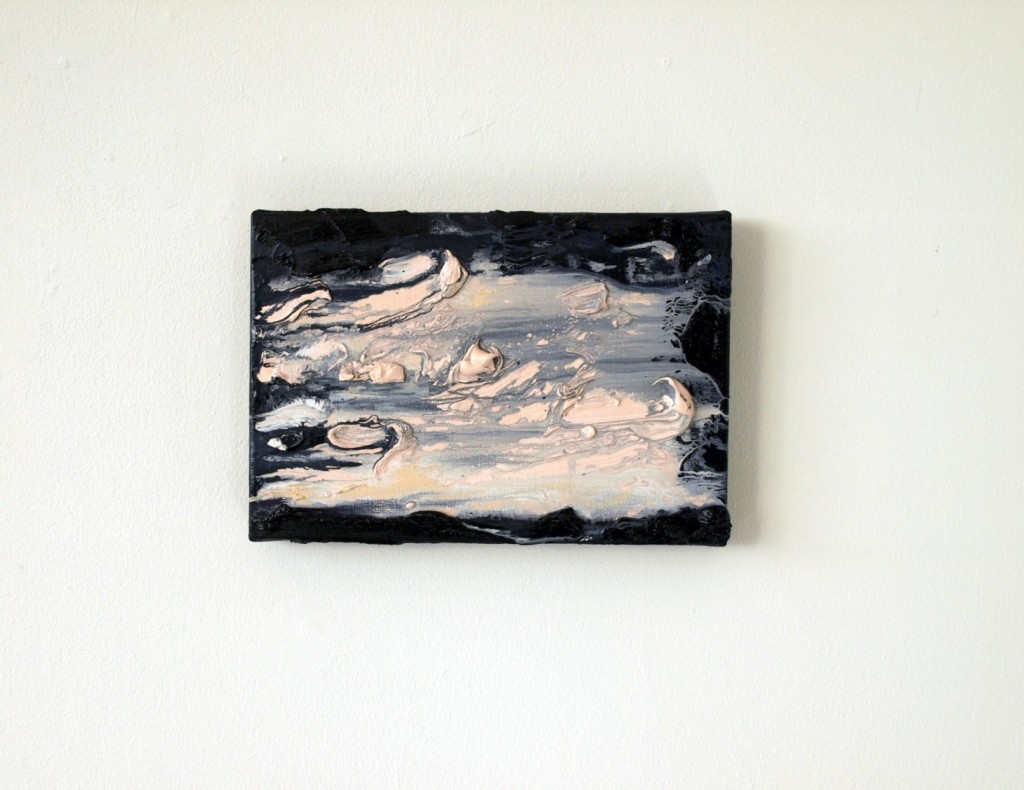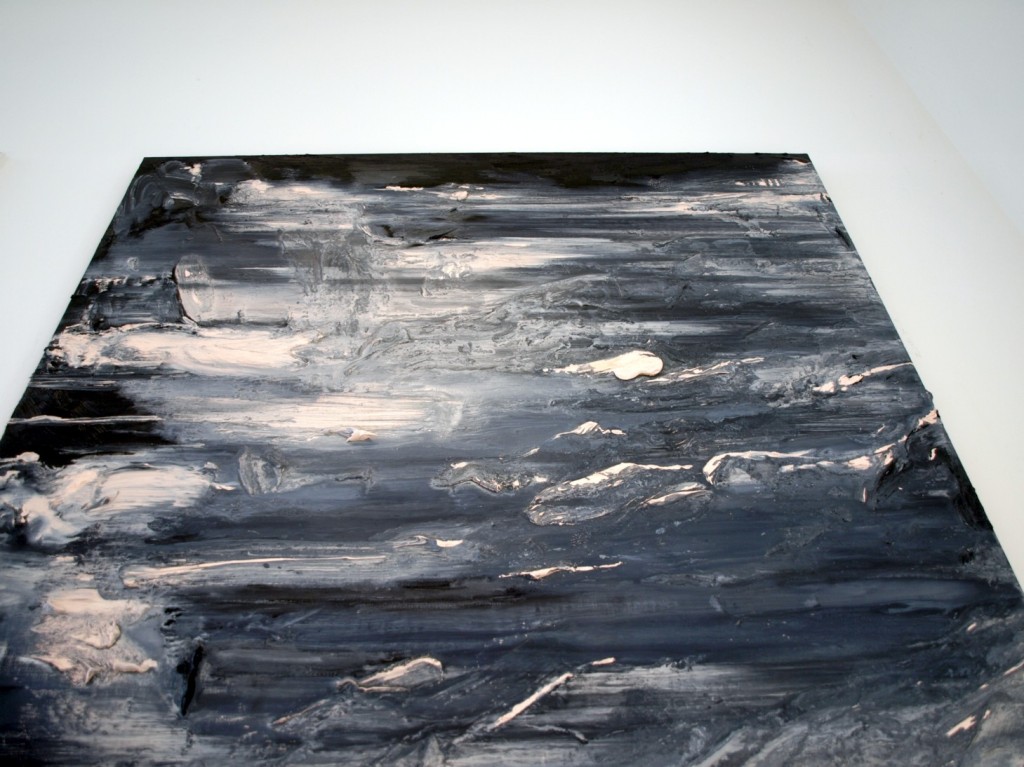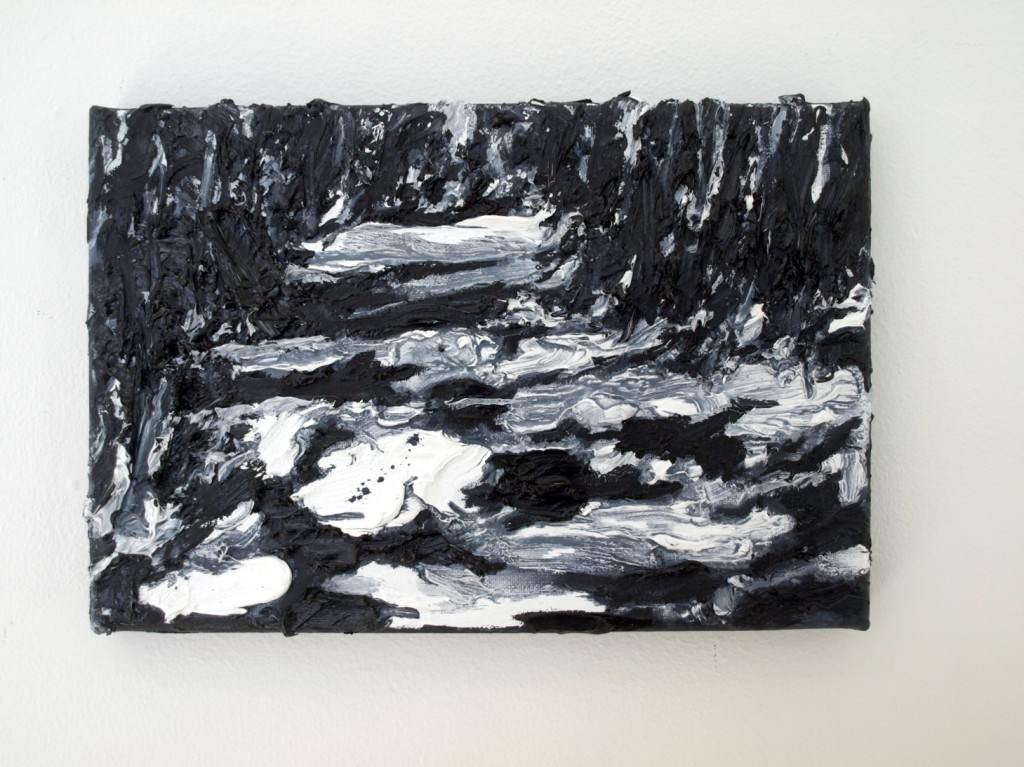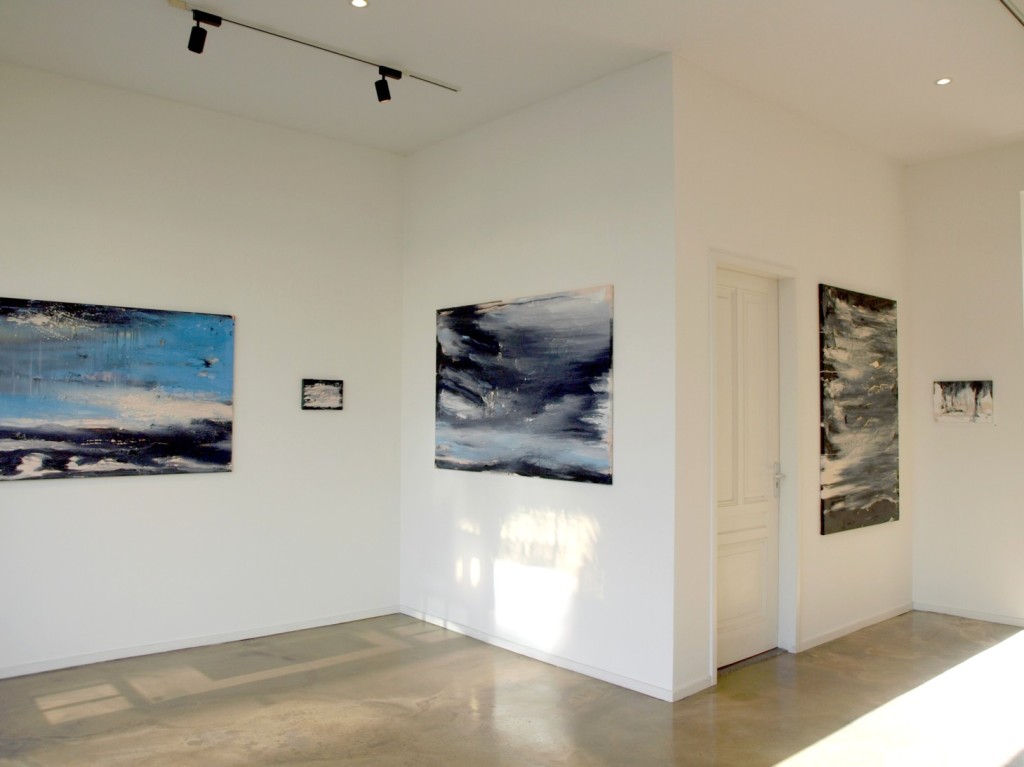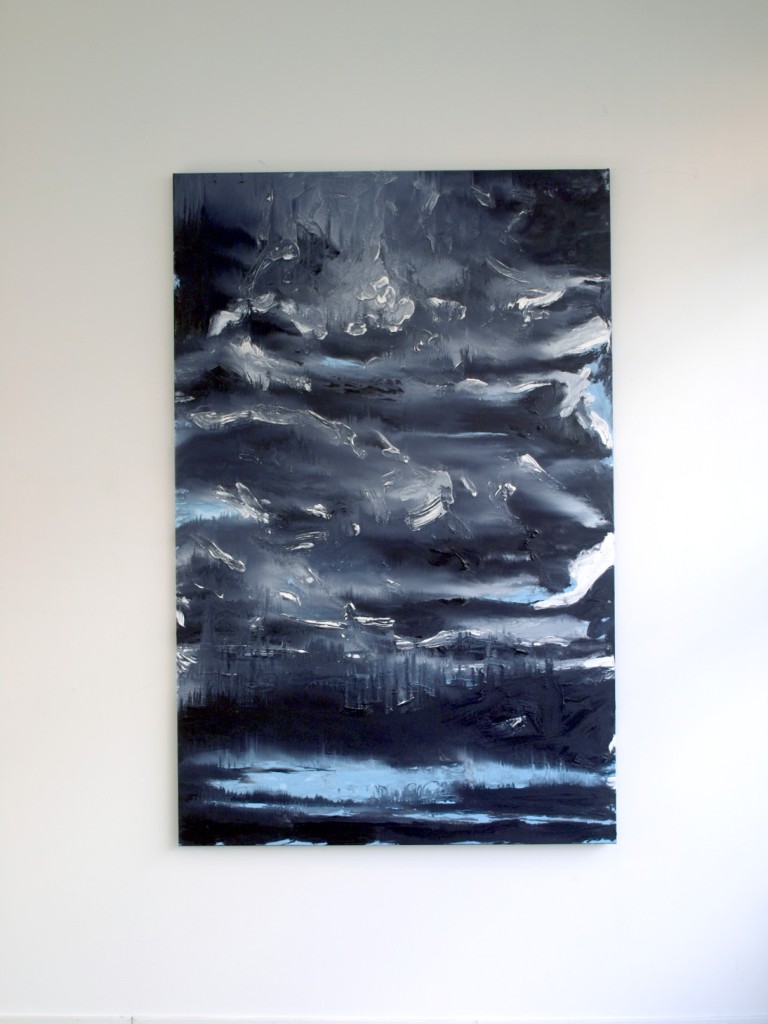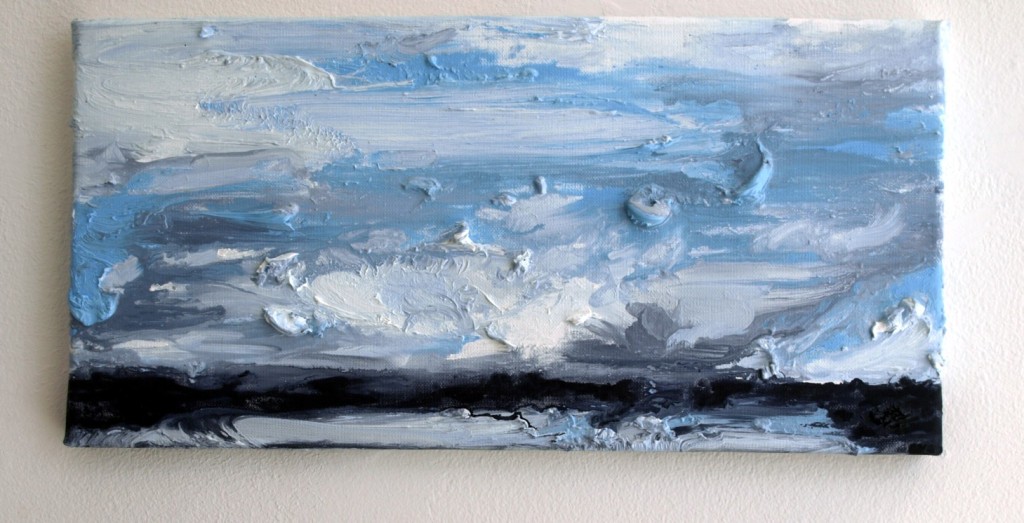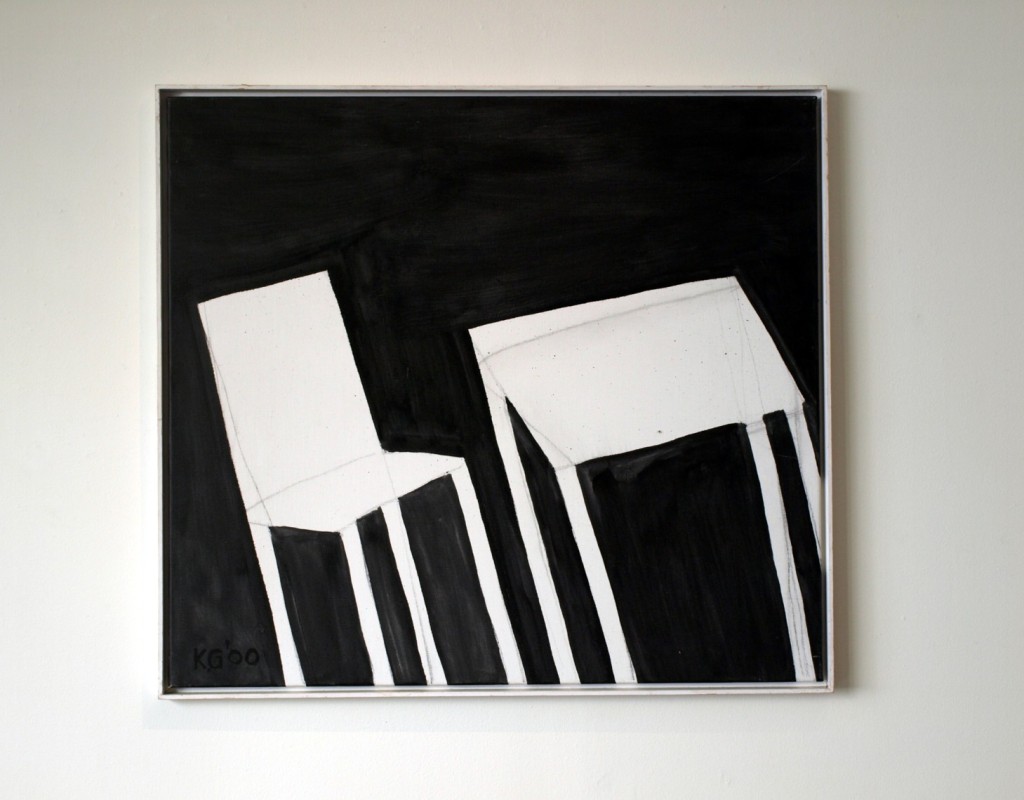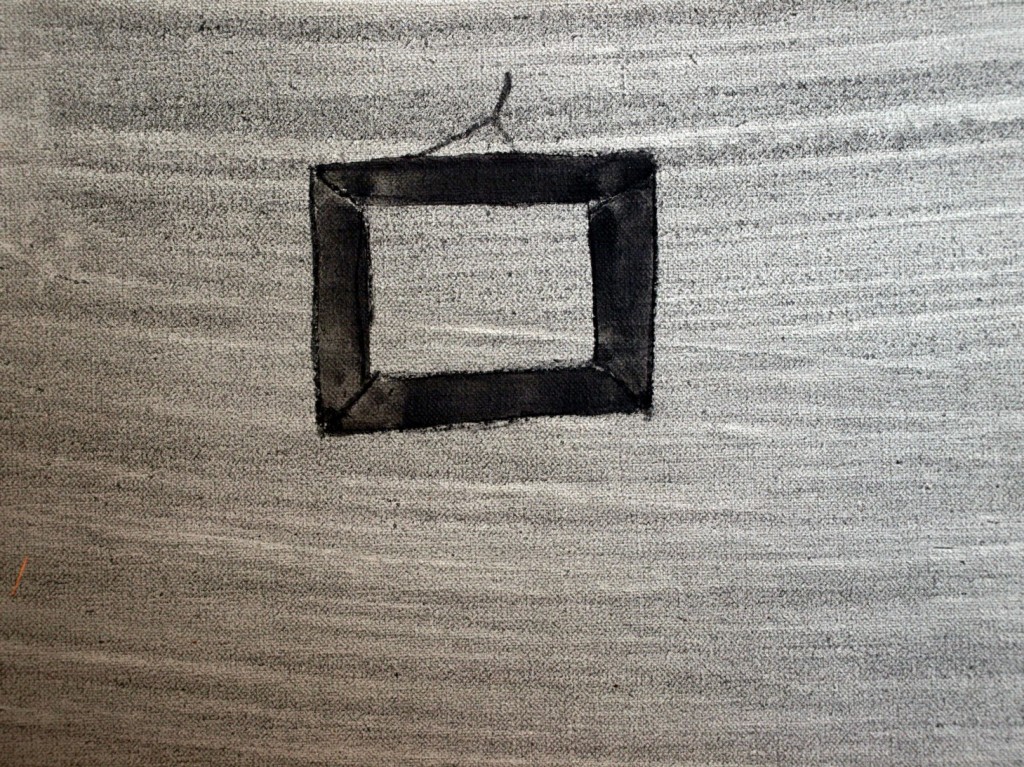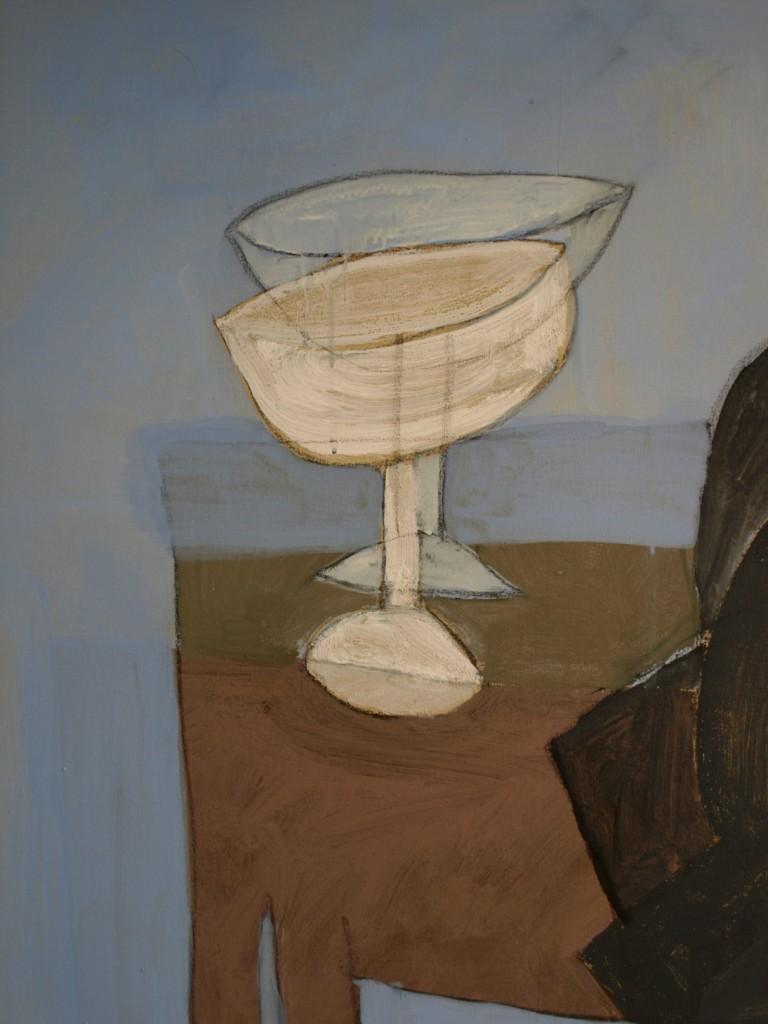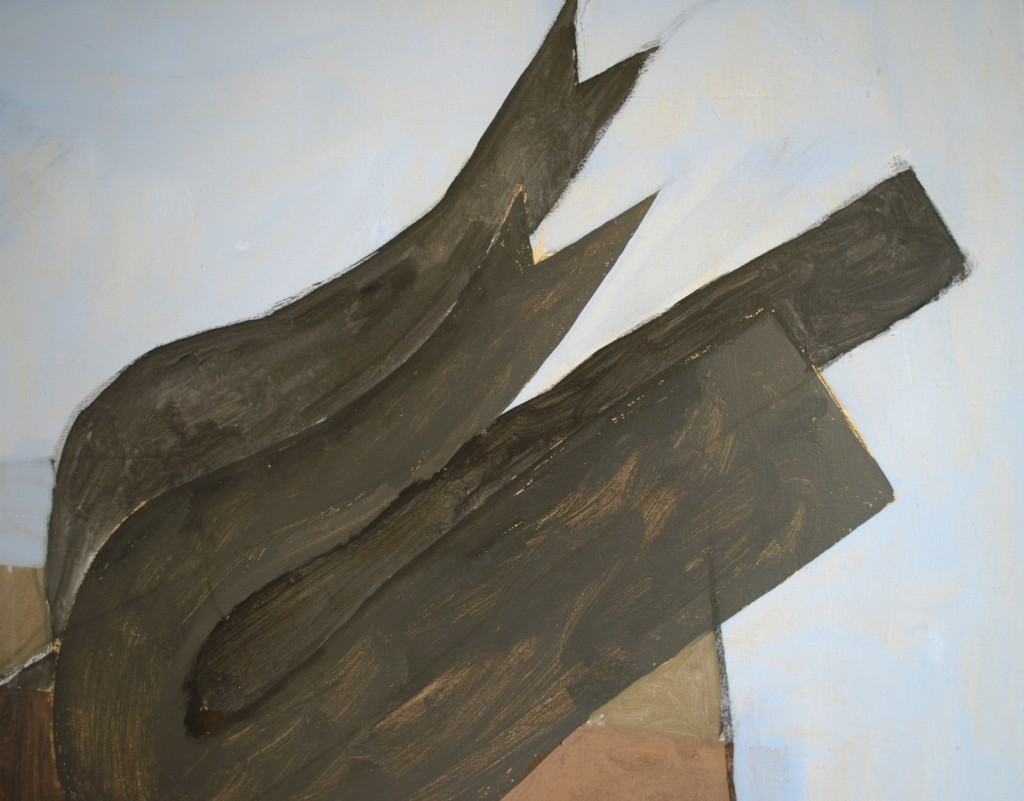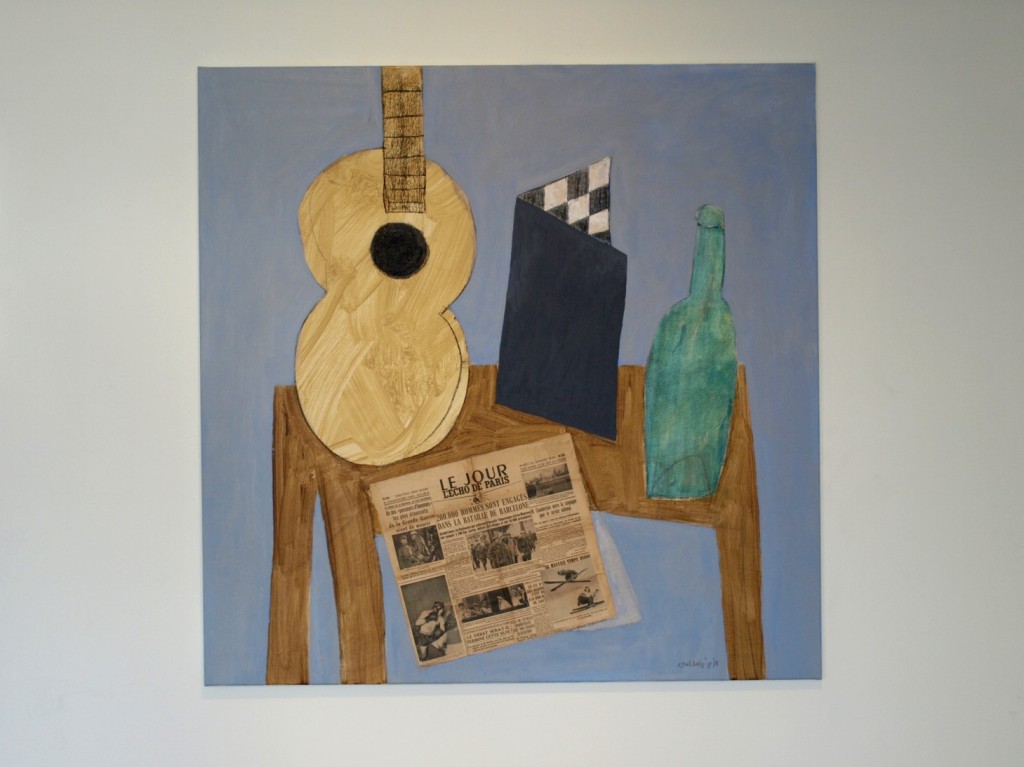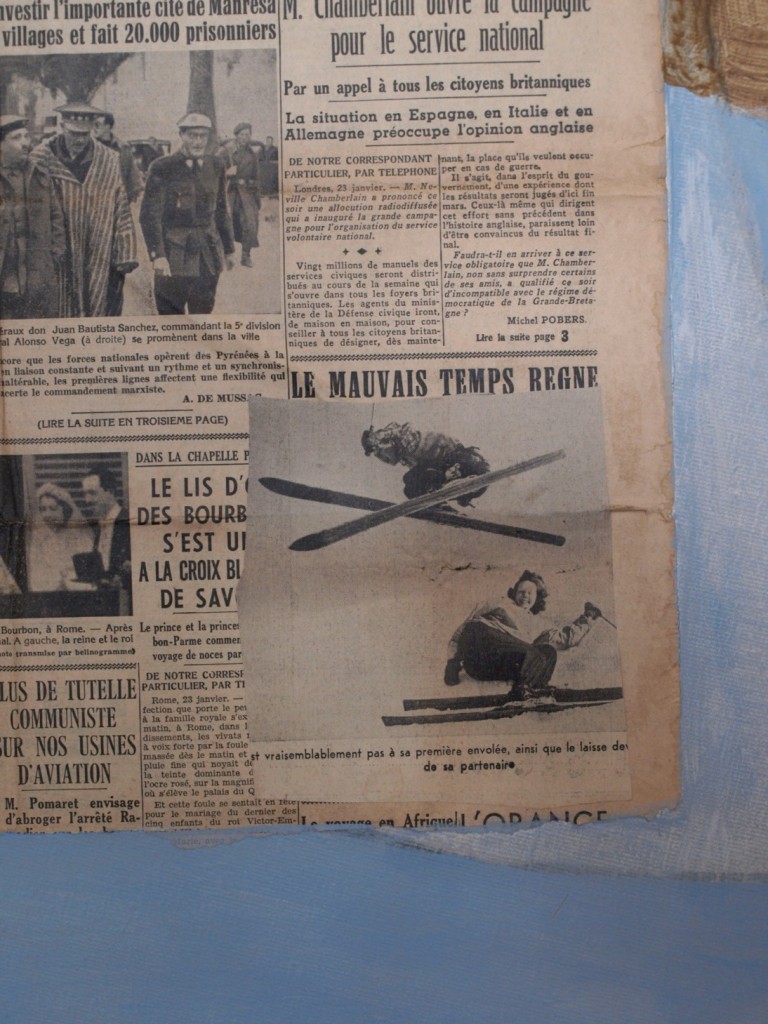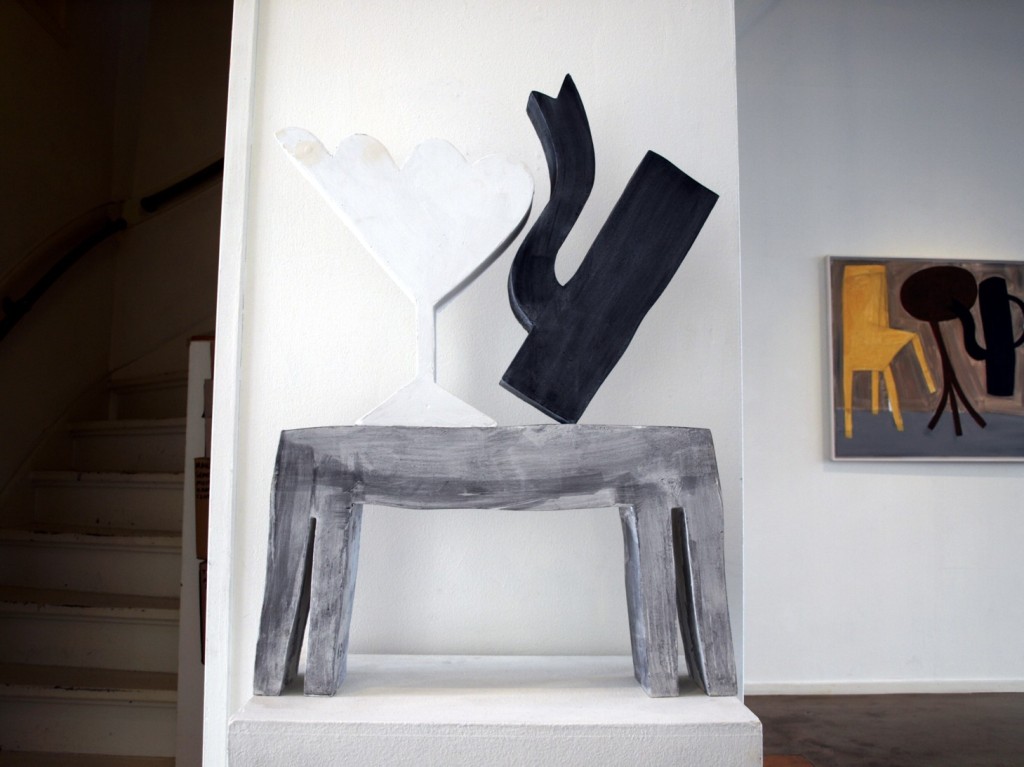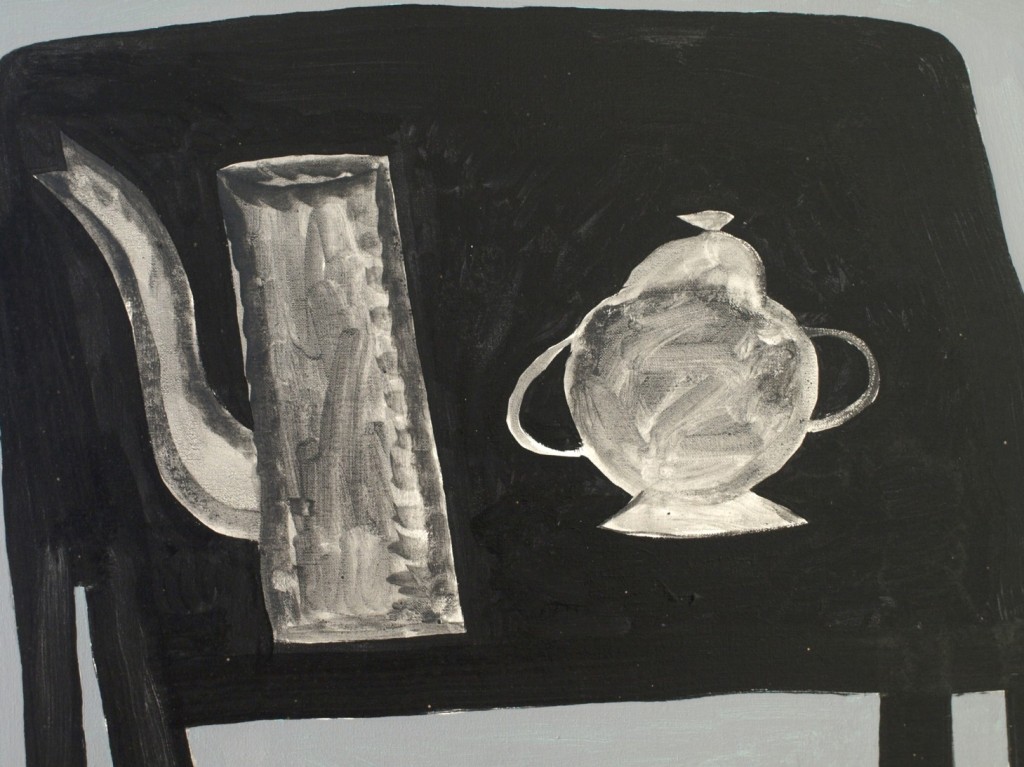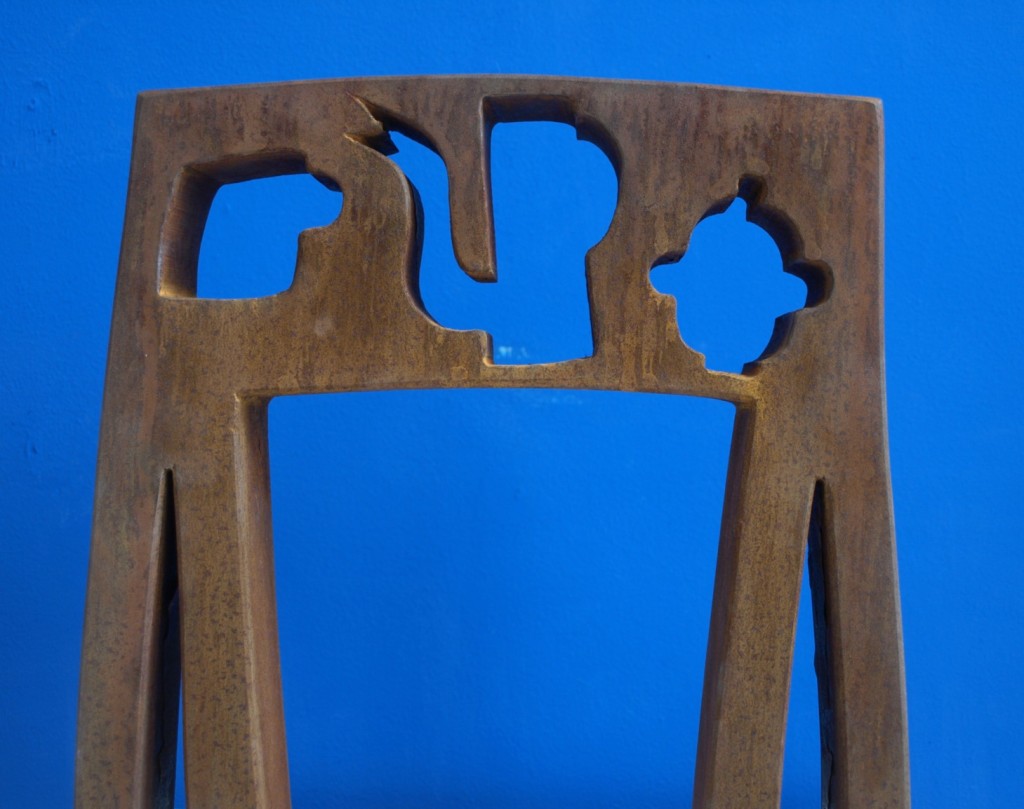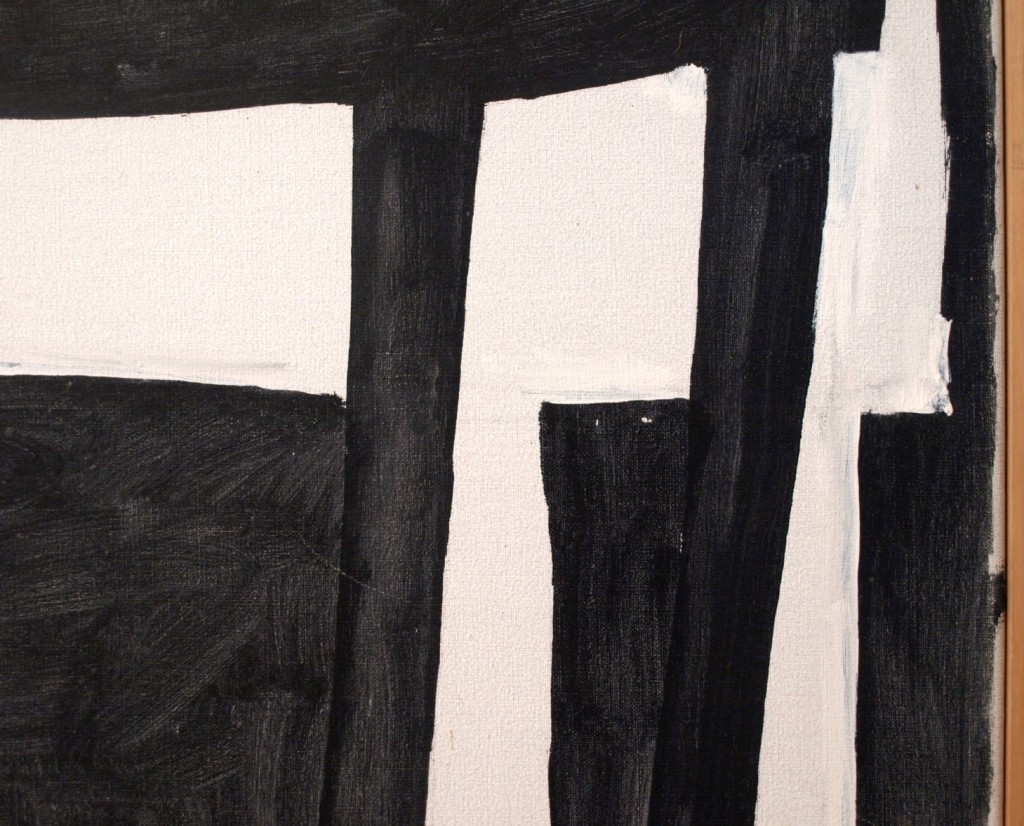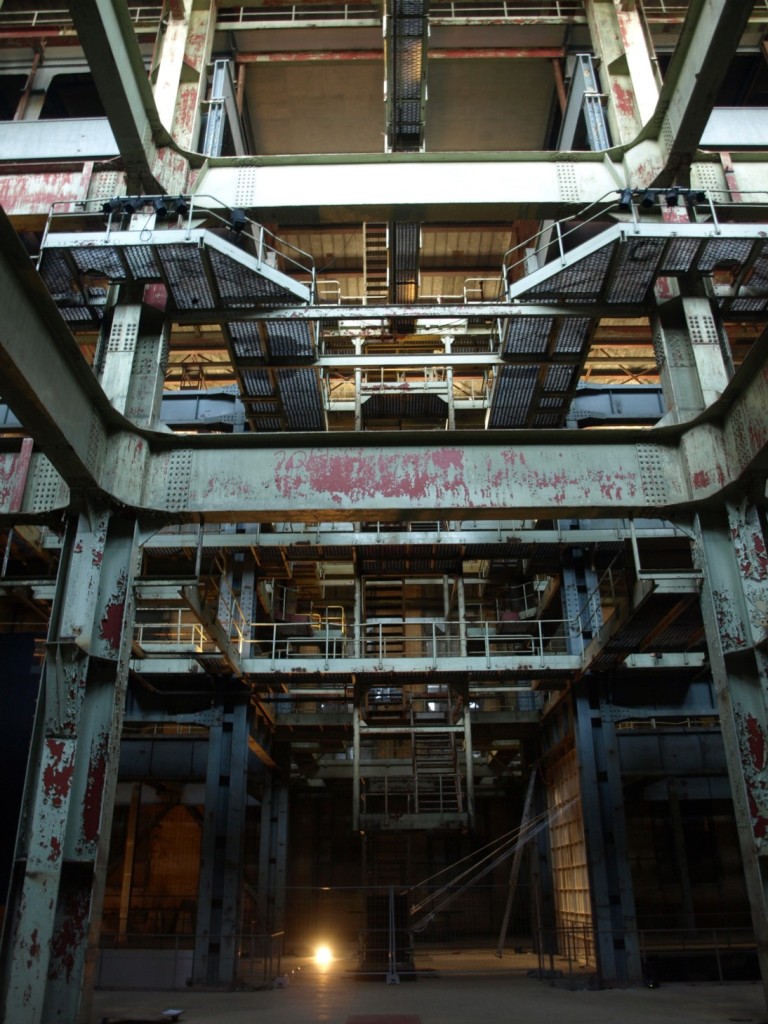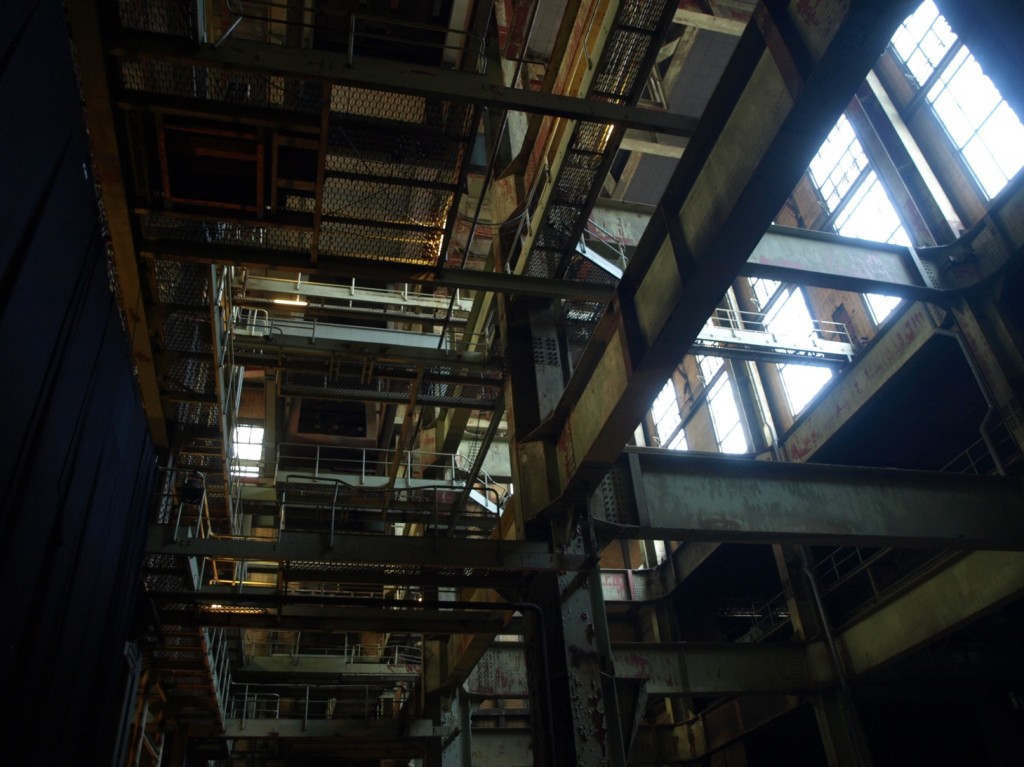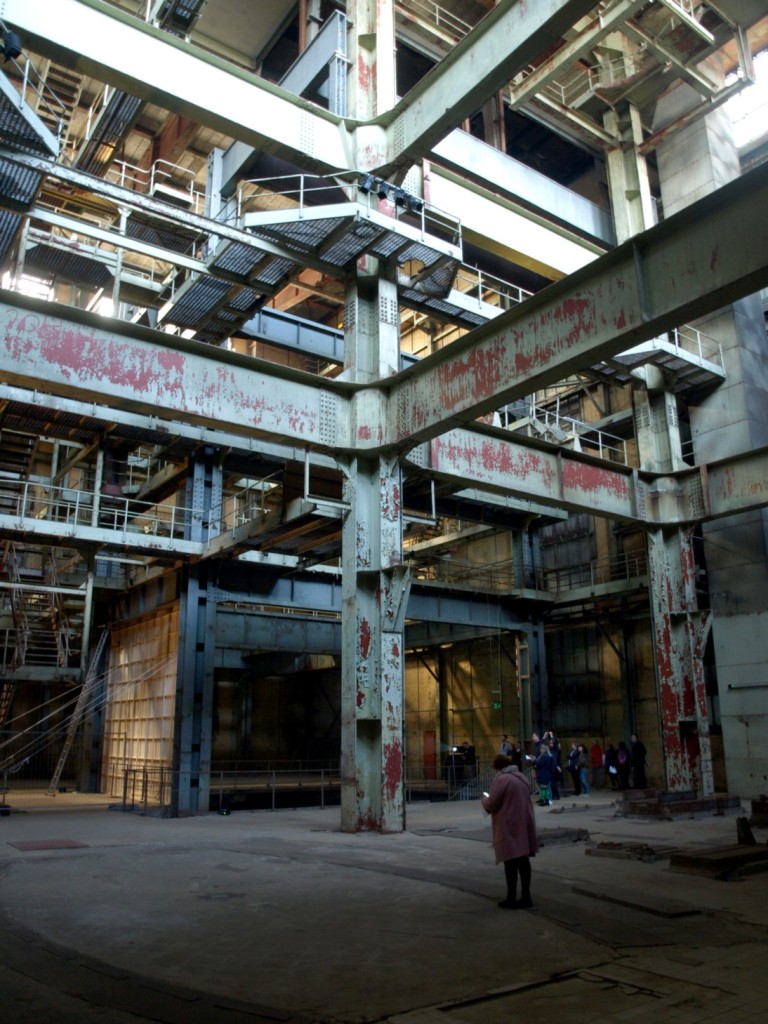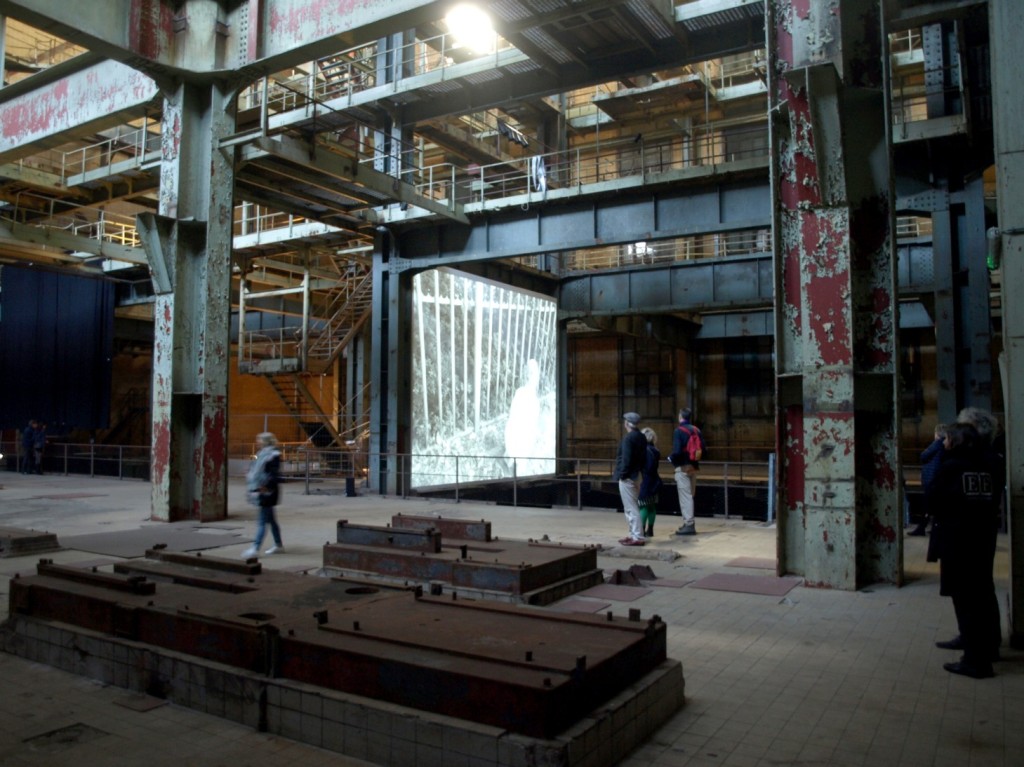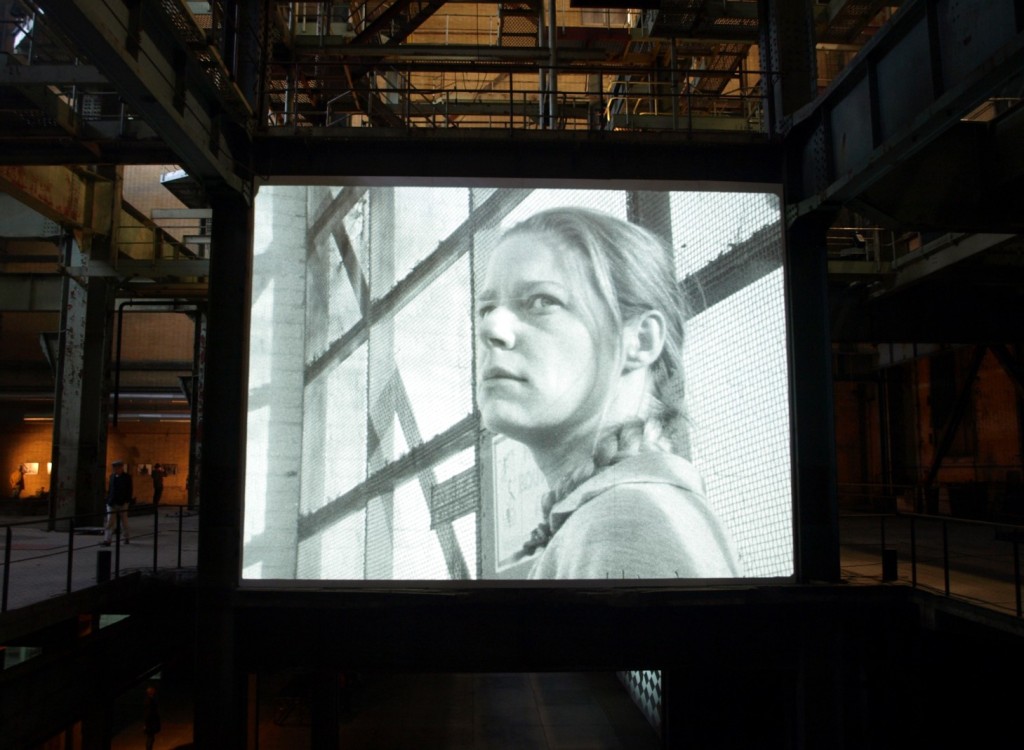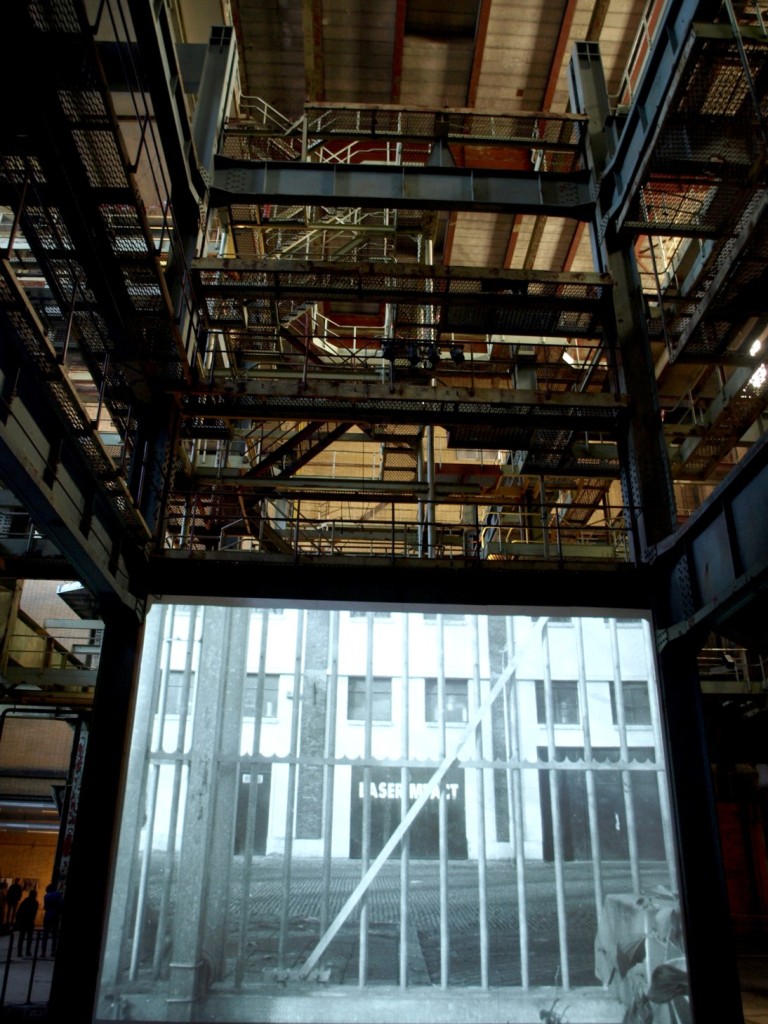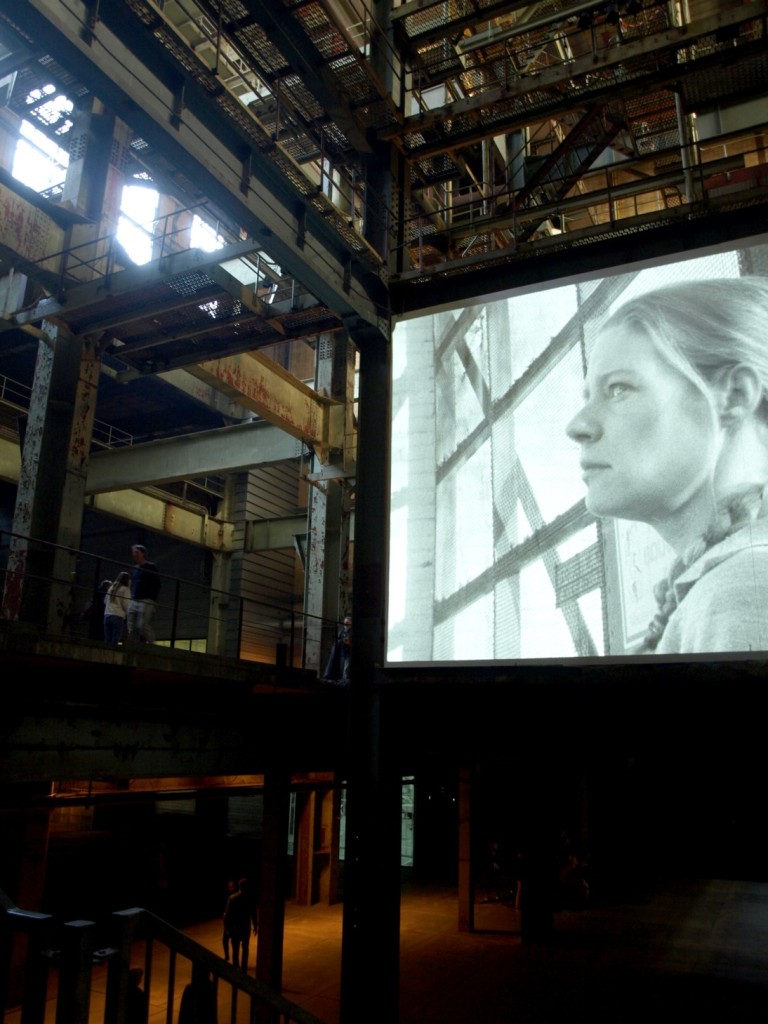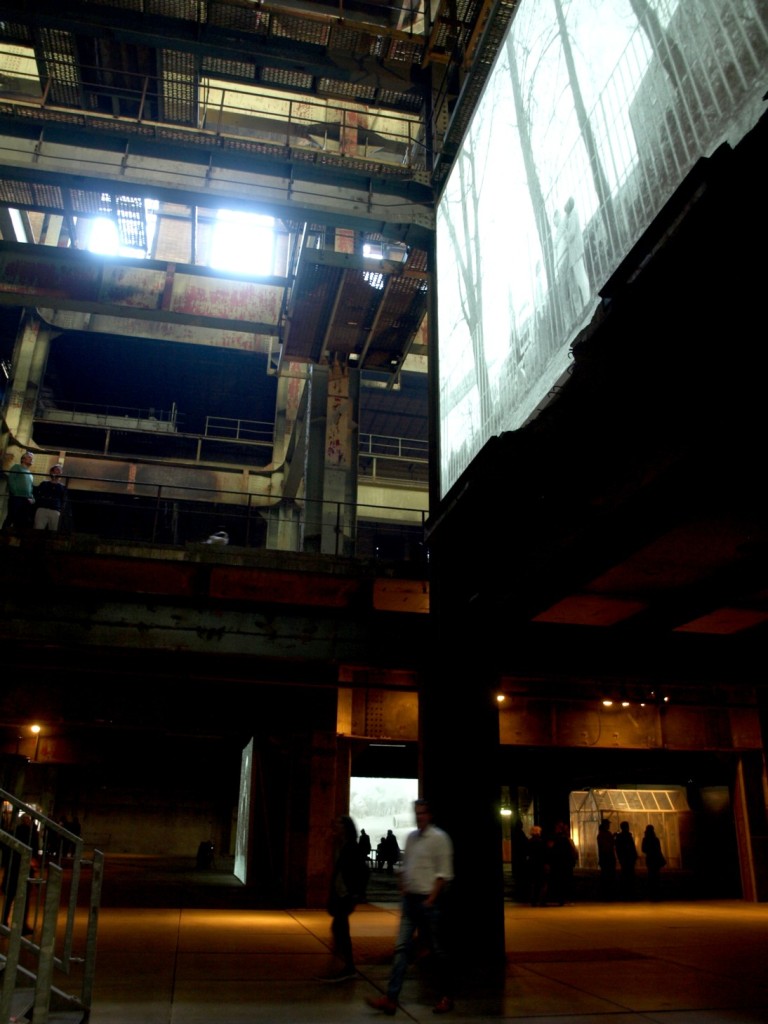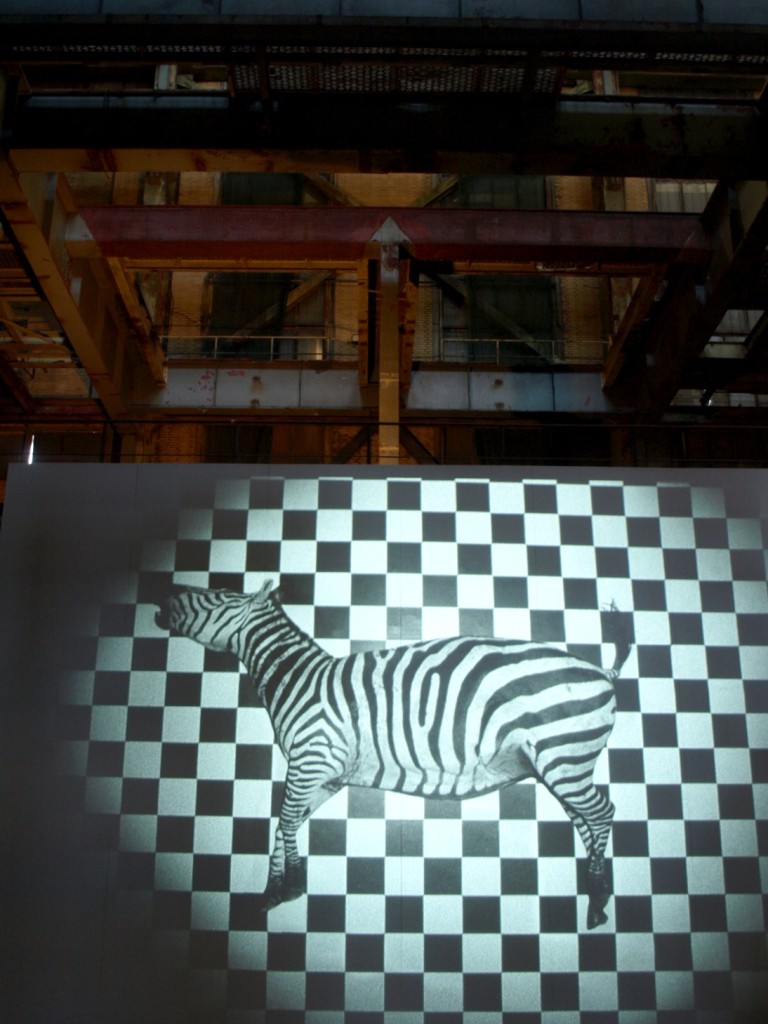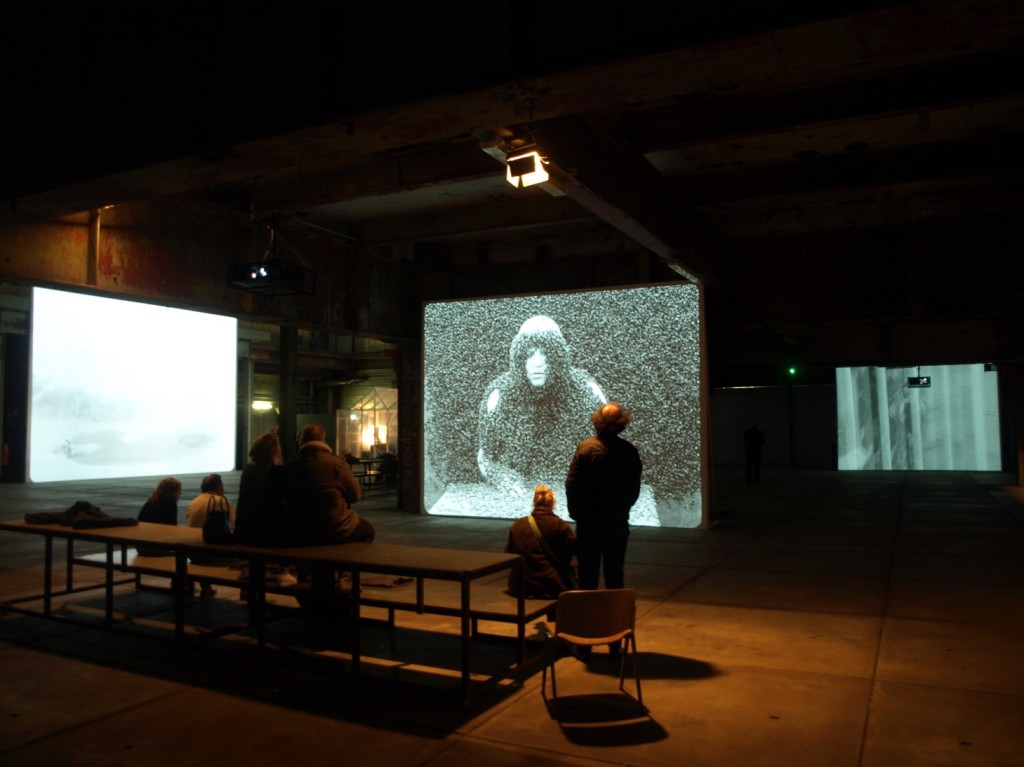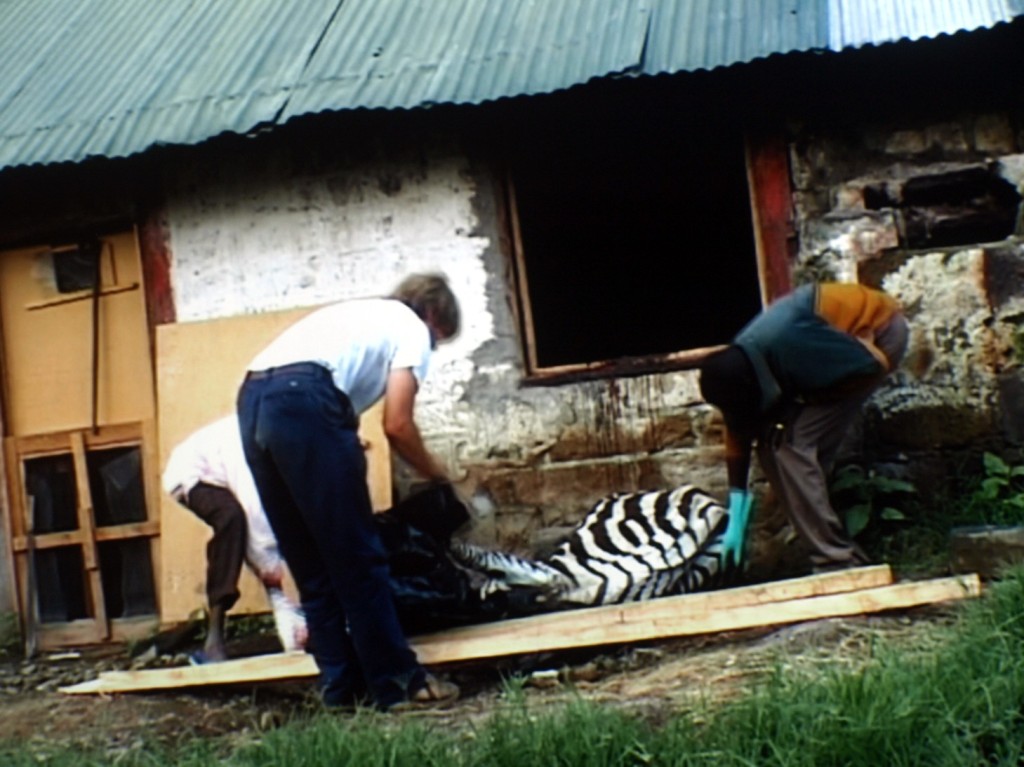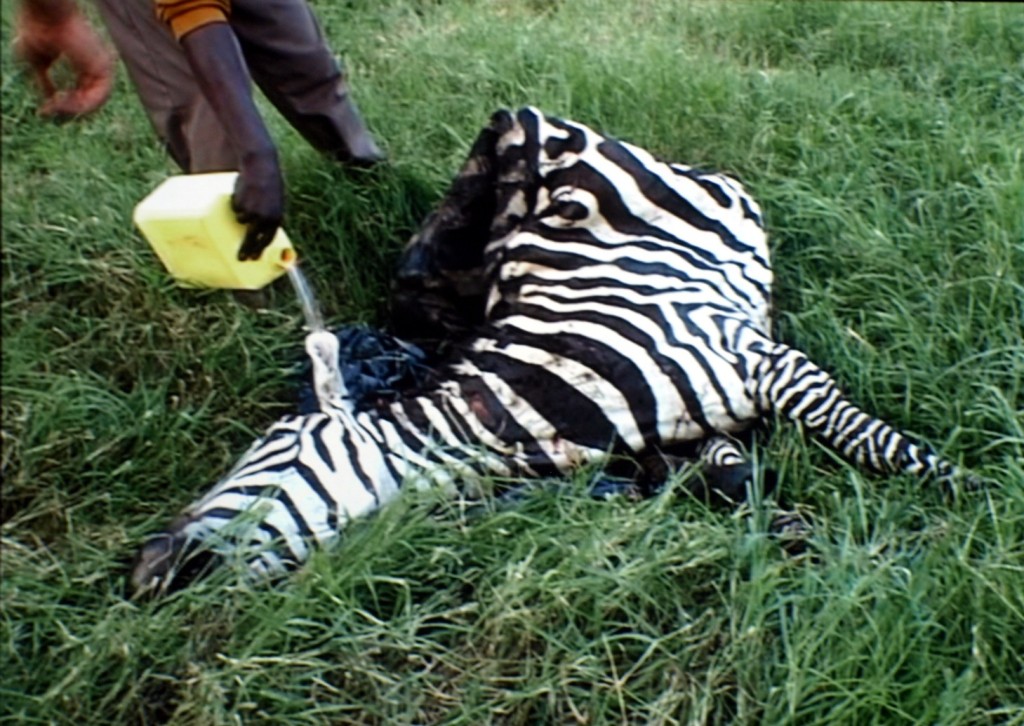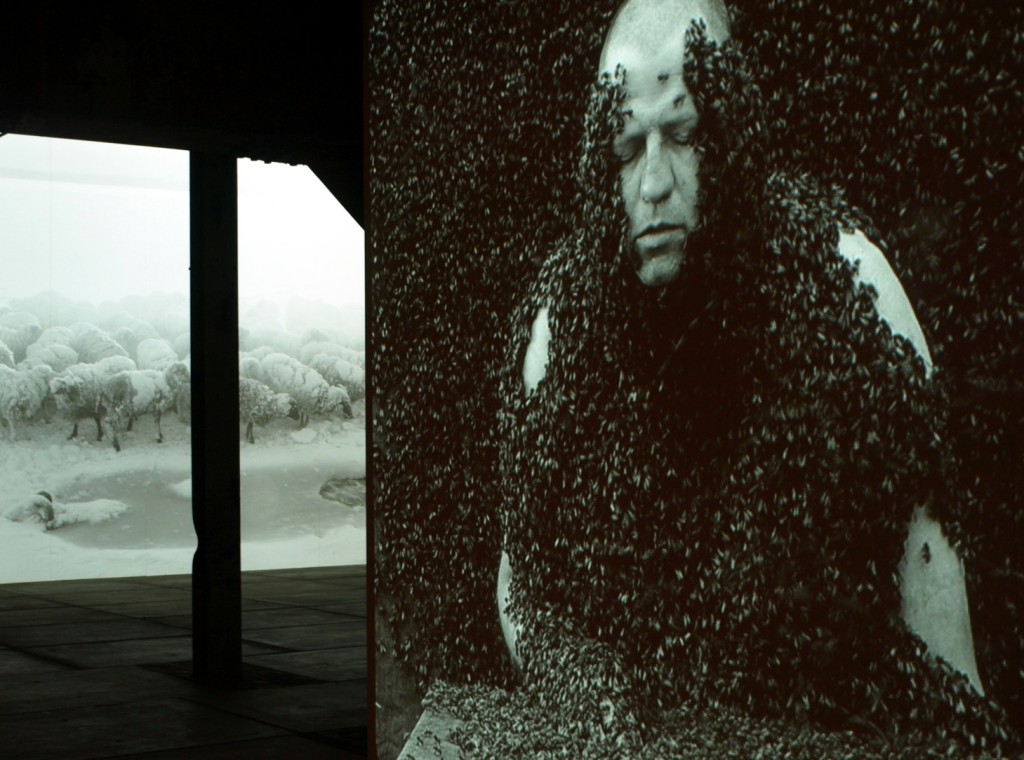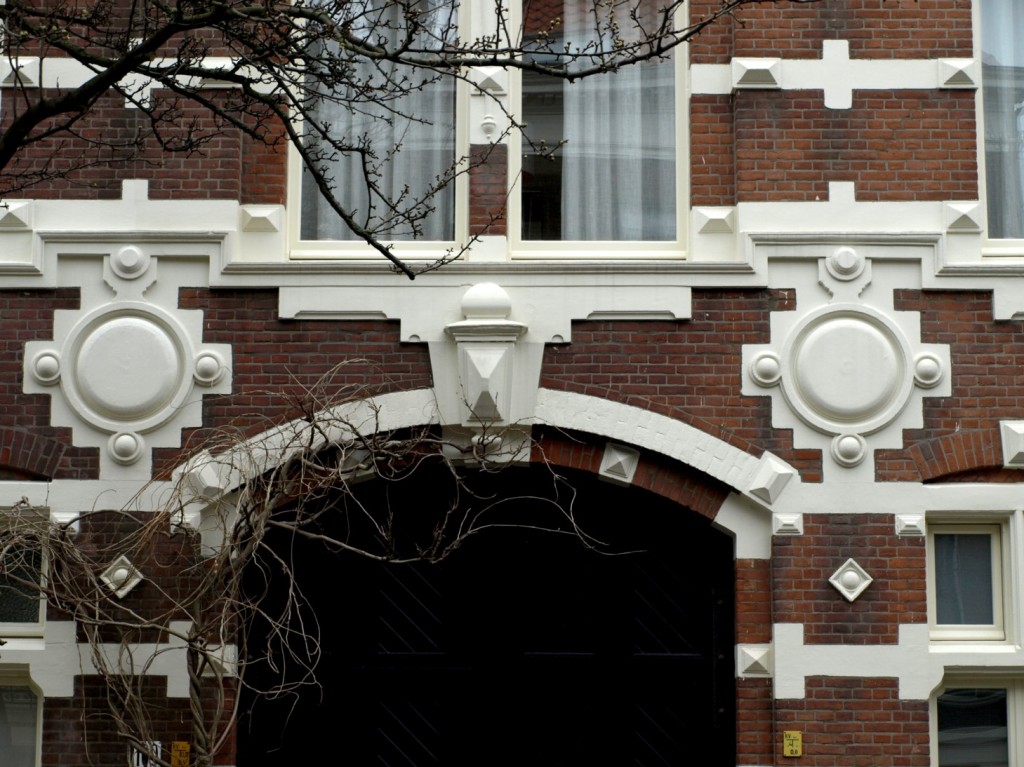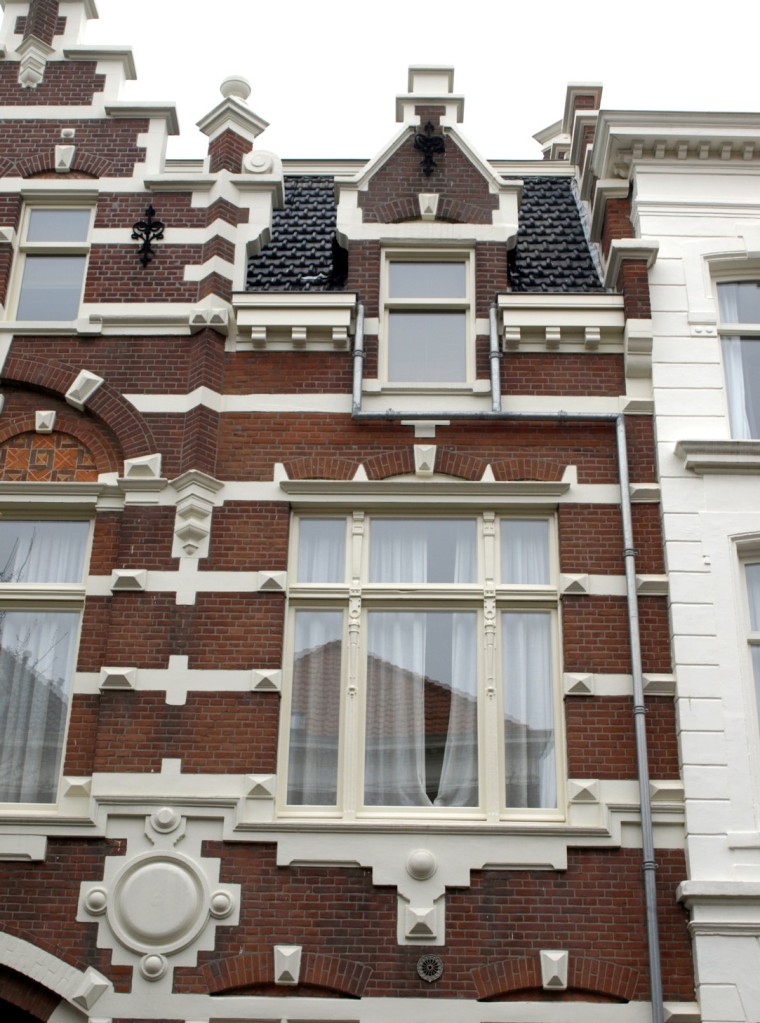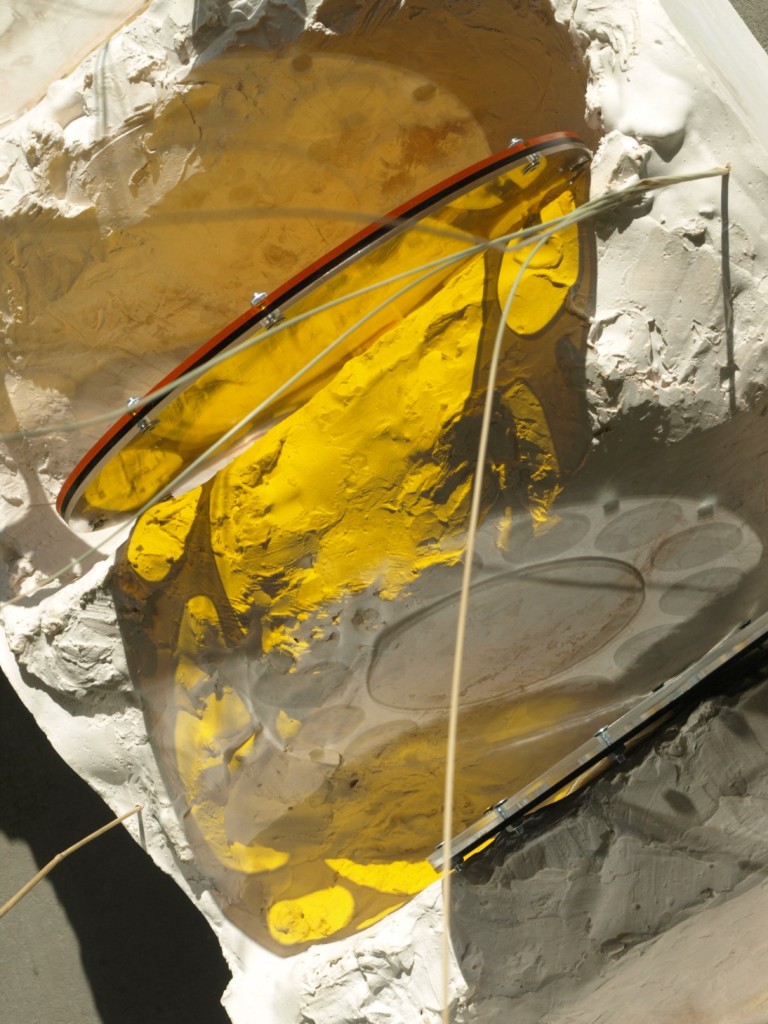
The invitation read: “A confrontation of a man with speeding uprise of technology and existing in the sarcastic post-postmodern world has led to the condition when one no longer finds it bearable to exist in the society overpowered by the hyper real. With the explosion of digital media one finds it hard to relate back to their own body, land, nature. A longing for not the past, but the times when mind, body and nature weren’t in mutually abusive relationships has crystalized in the very essence of this exhibition. By relating on natural materials and strong storytelling the selected artists attempt to claim back what’s theirs – the physicality of their body; the authenticity of their touch, breath, brushstroke; the utter connection to planet Earth and earthly beings.”


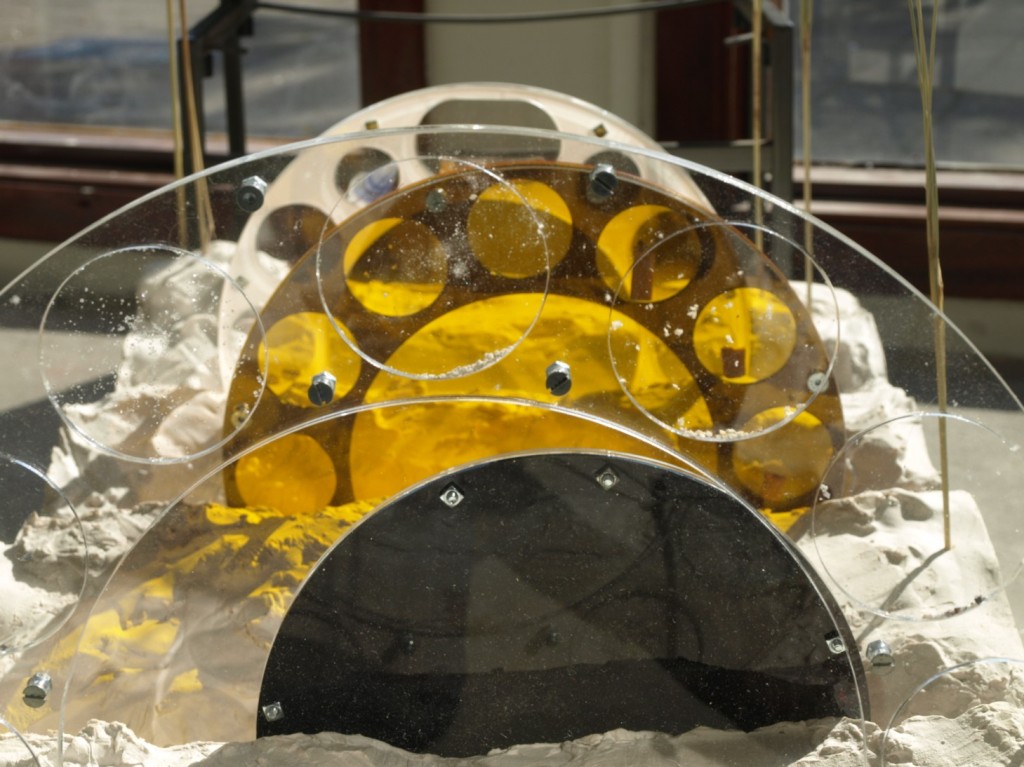
Come on, folks! Not again this stumbling, quasi-international language! Either write it in poetry or just say what you want.

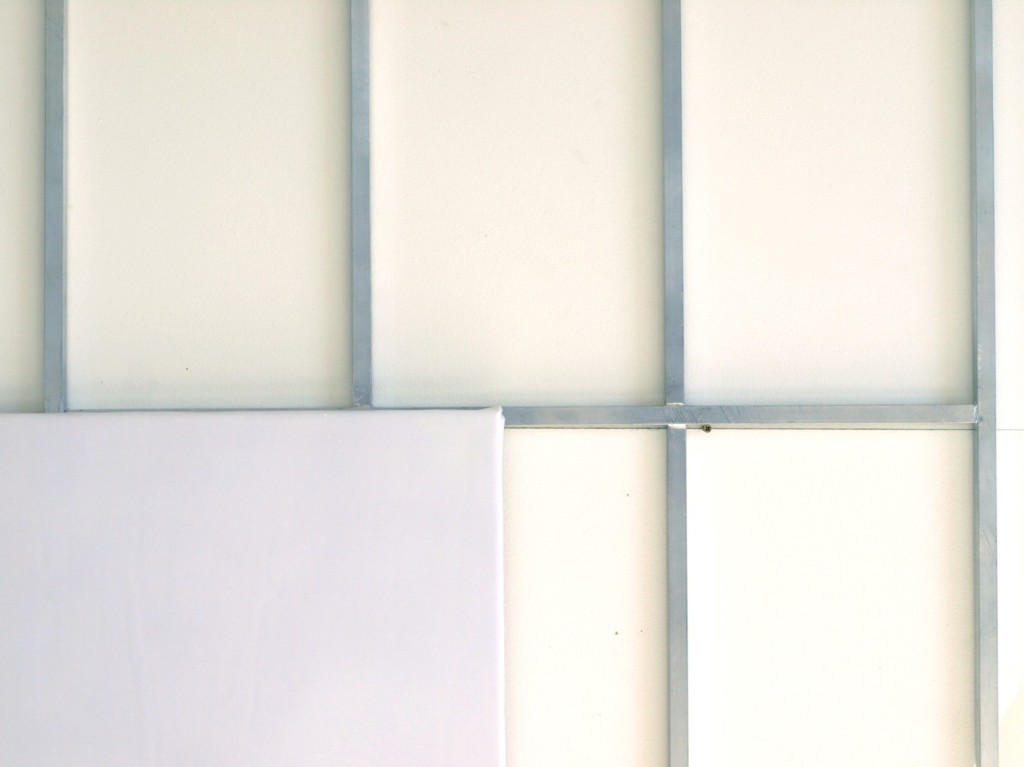
An Indefinite Terrain was a very short running exhibition last weekend at Trixie.

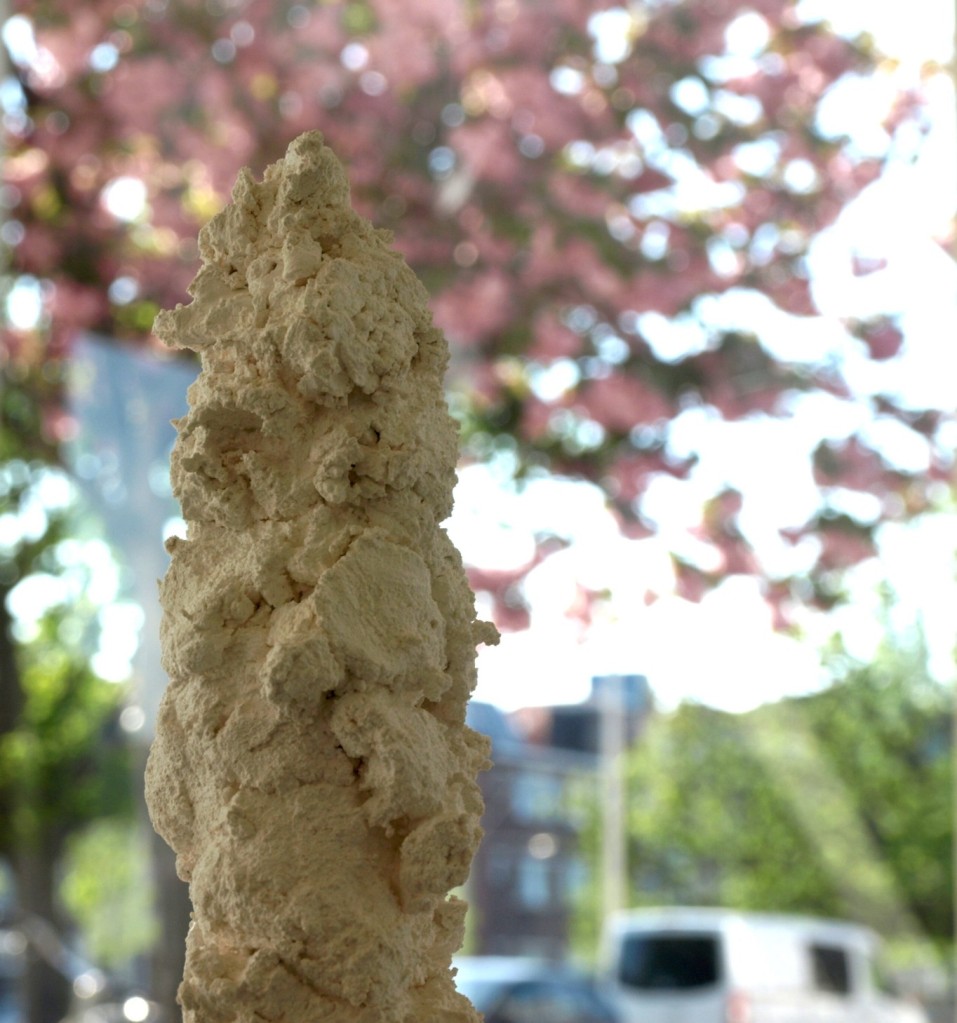

The general mood was one of defiance, challenging present day society which keeps you constantly busy with its obtrusive and indeed unnecessary requirements.
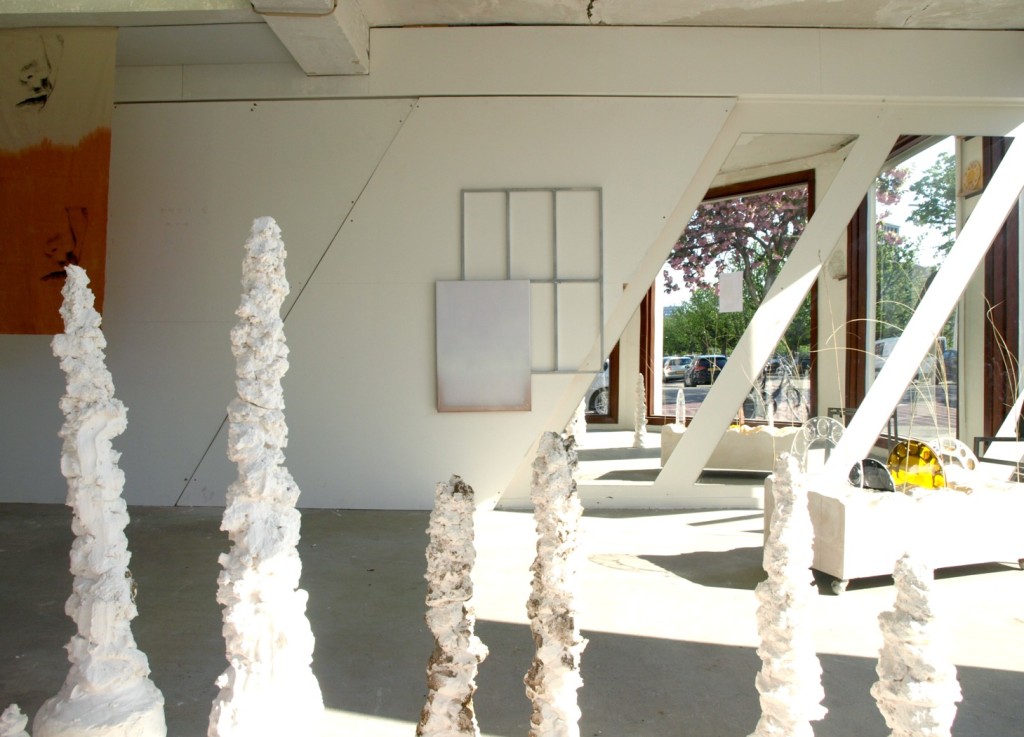

Here were six artists, Katerina Sidorova, Iliada Charalambous, Gijsje Heemskerk, Debbie Young, Emma van Noort and Brigitte Louter, who tried to recapture their independent minds against the odds.

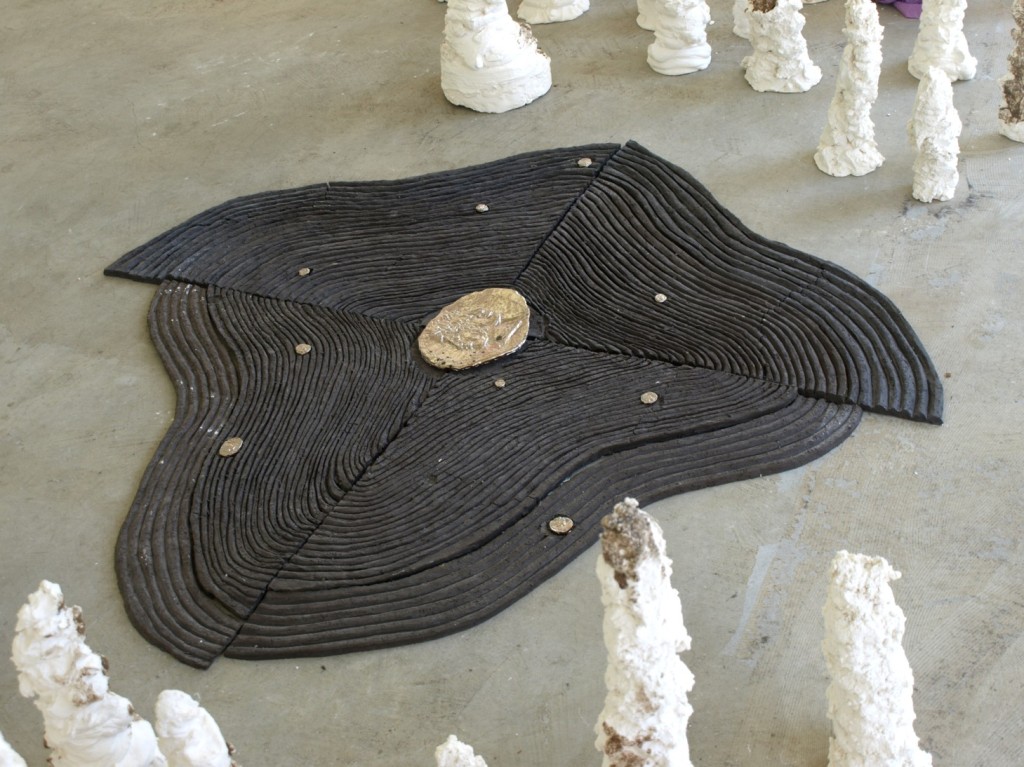


Former show room Trixie seems to be just the right place for it.

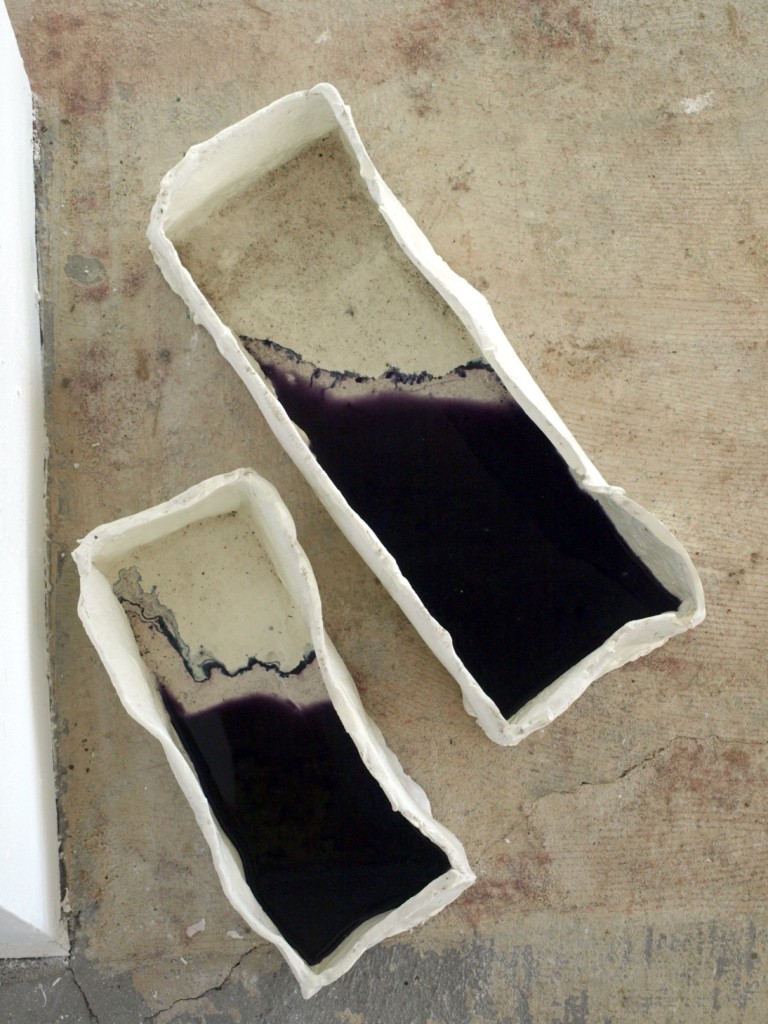
The show itself, as well as many of the works, were characteristically makeshift, as if exhibiting, and indeed making art, has become a matter of hit and run in these post-postmodern times.
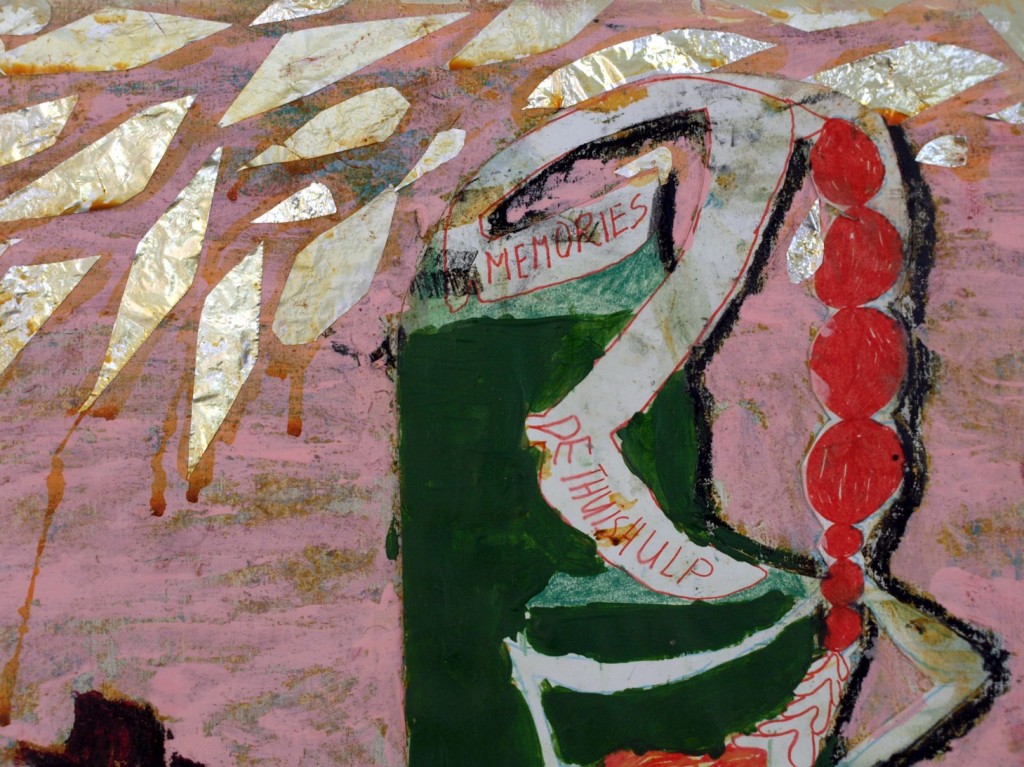
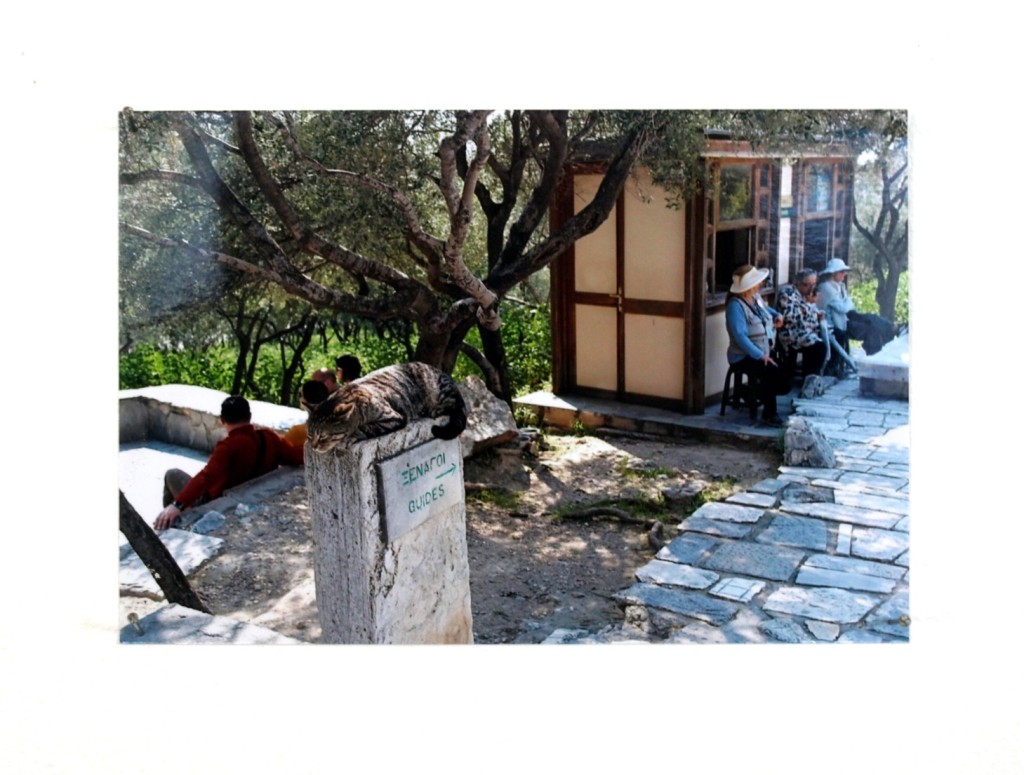
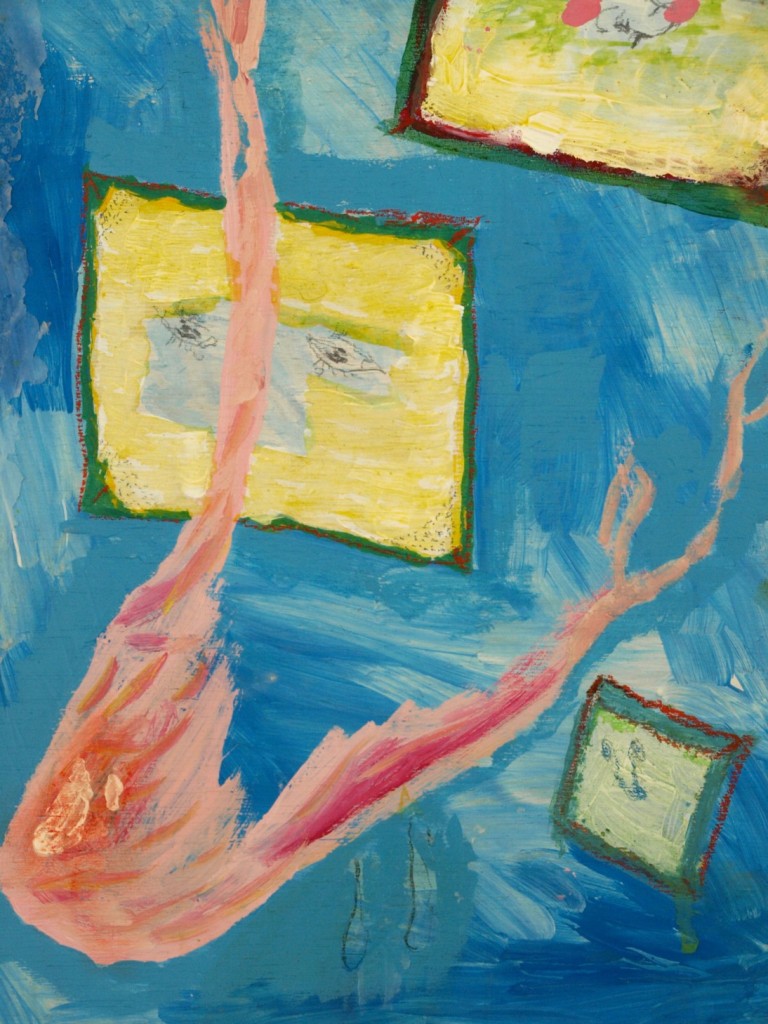
In itself that is fine as it shows developments and basic ideas.


The danger is that works become too transient to be really meaningful.


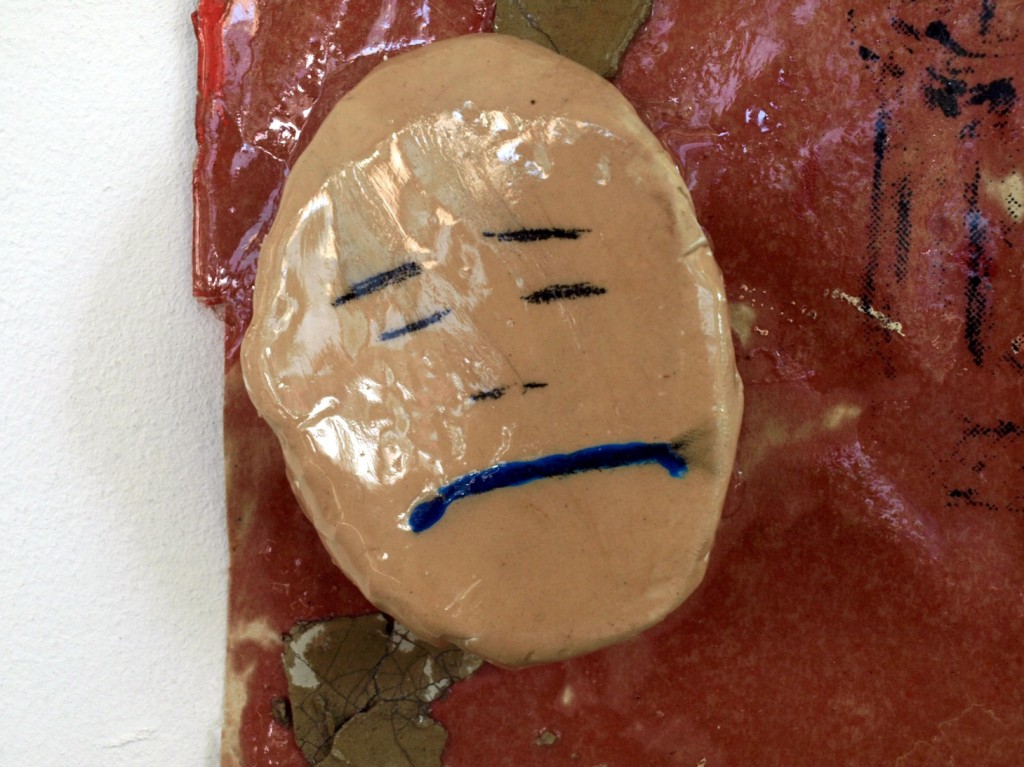
And if it is hit and run, i’d suggest to hit harder as i’m sure you can!

© Villa Next Door 2019
Content of all photographs courtesy to the artists and Trixie, Den Haag
Bertus Pieters

